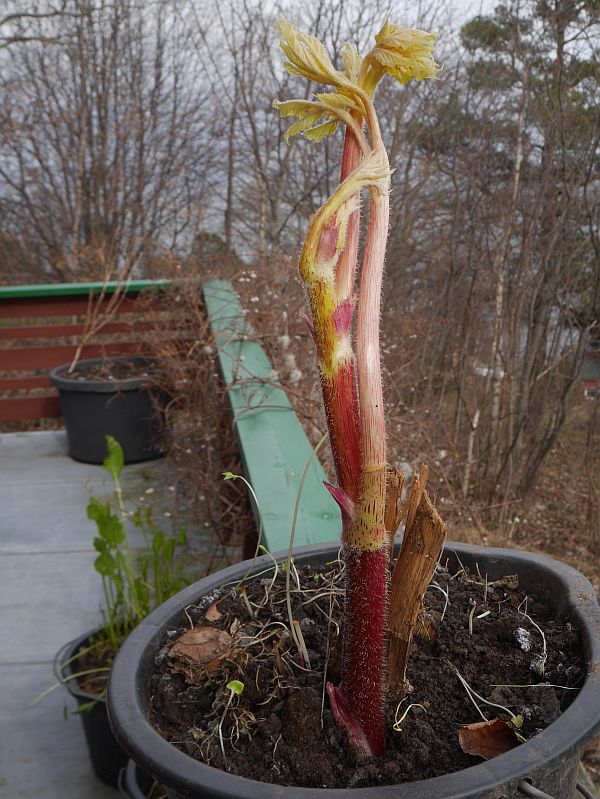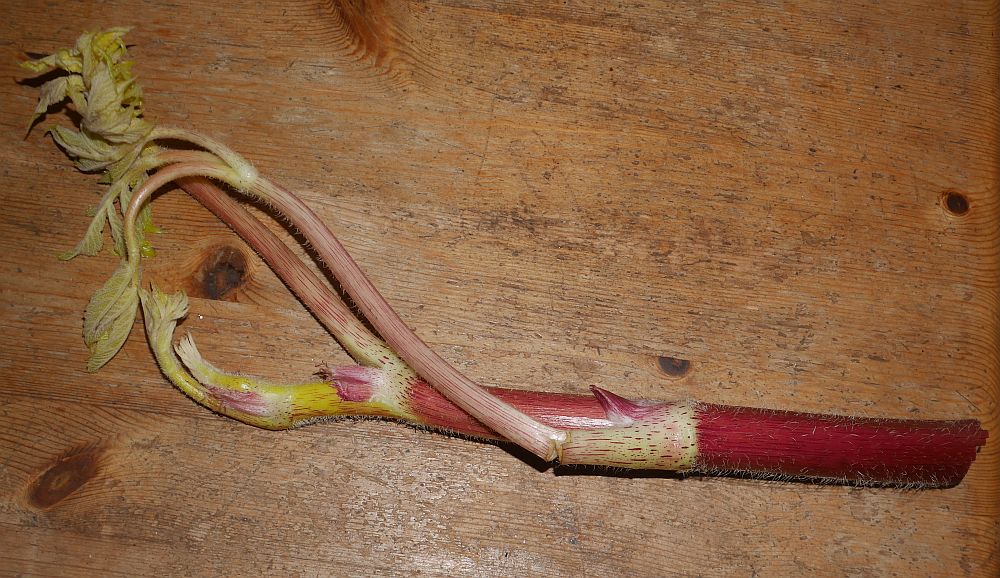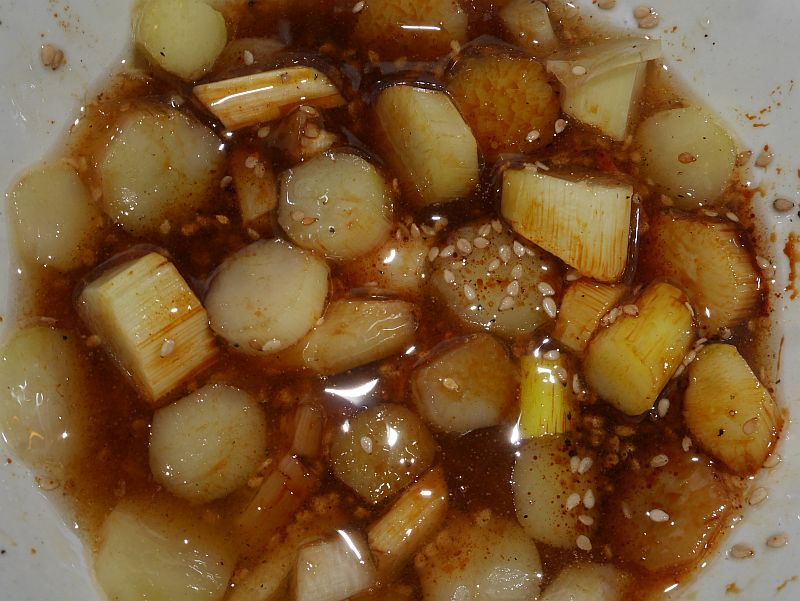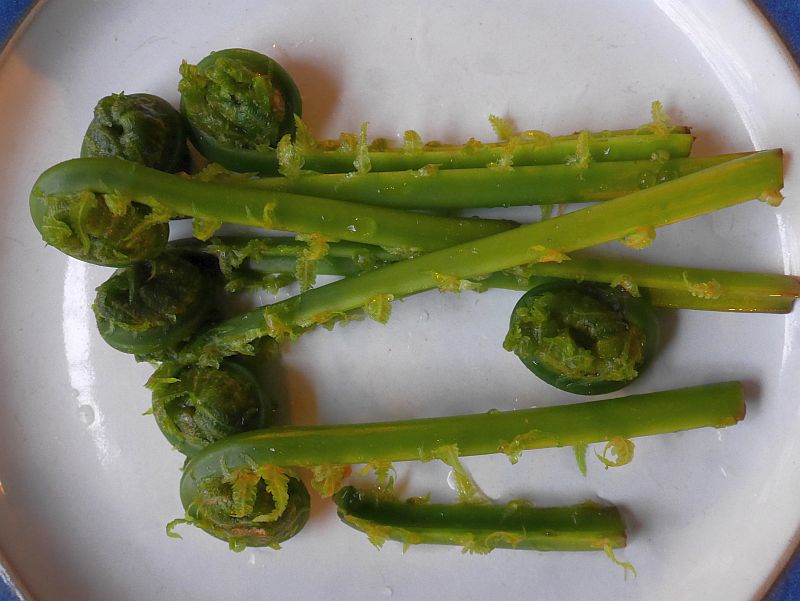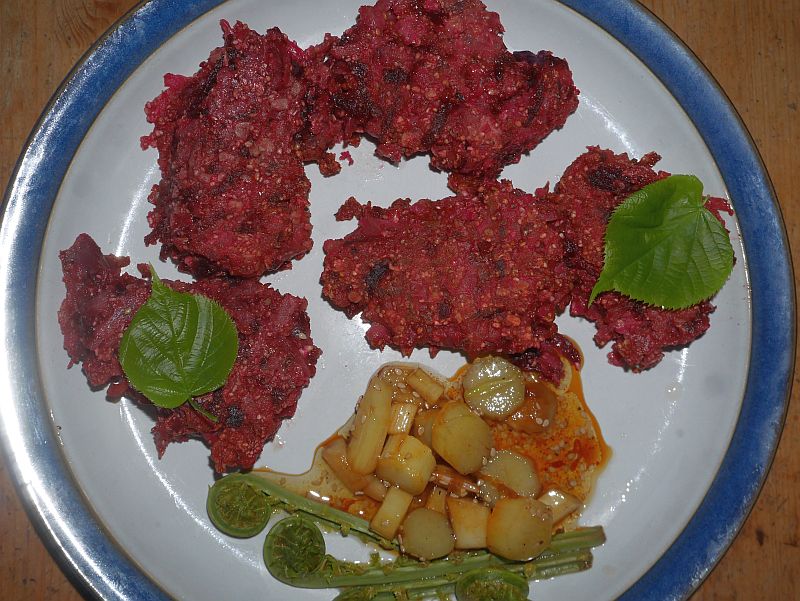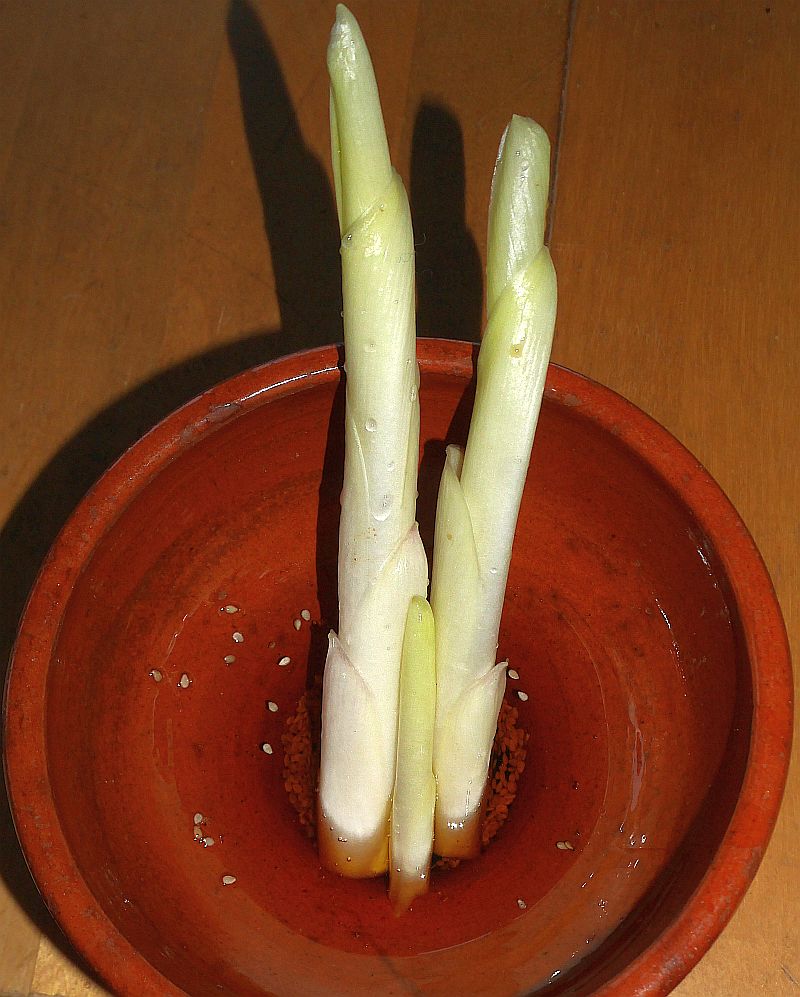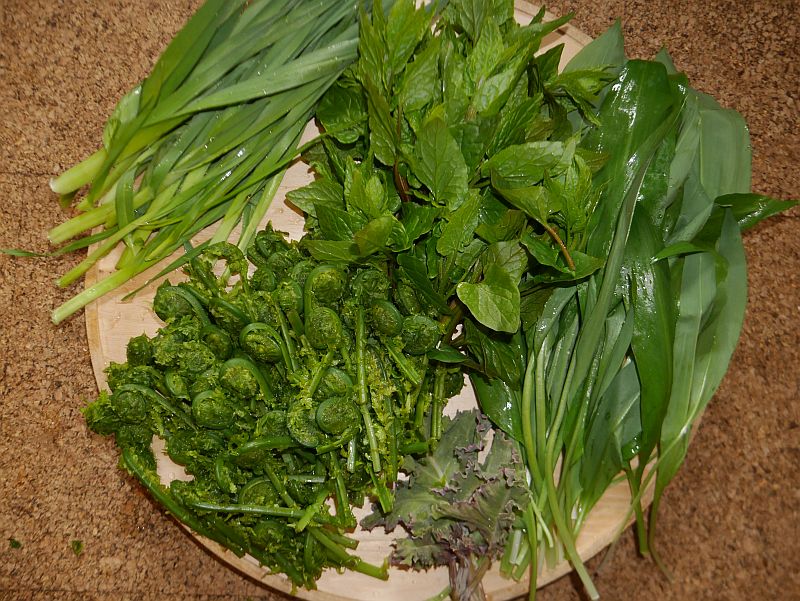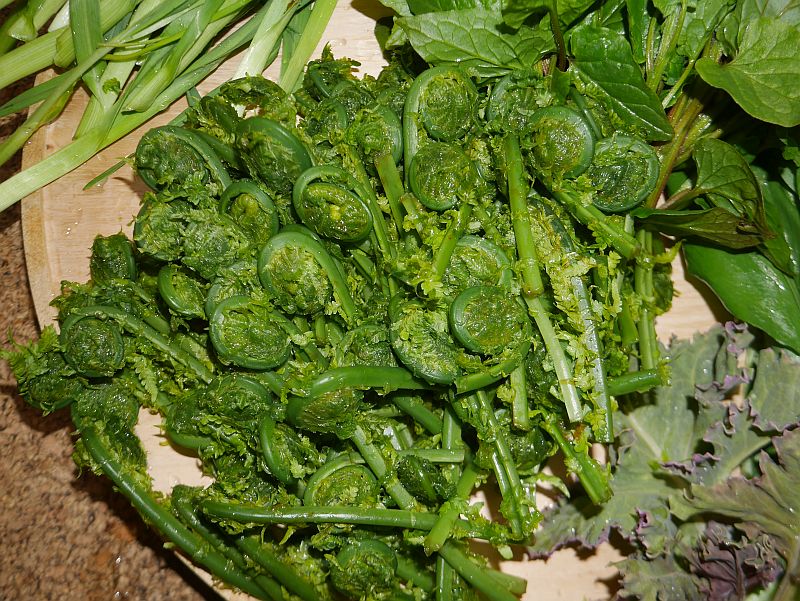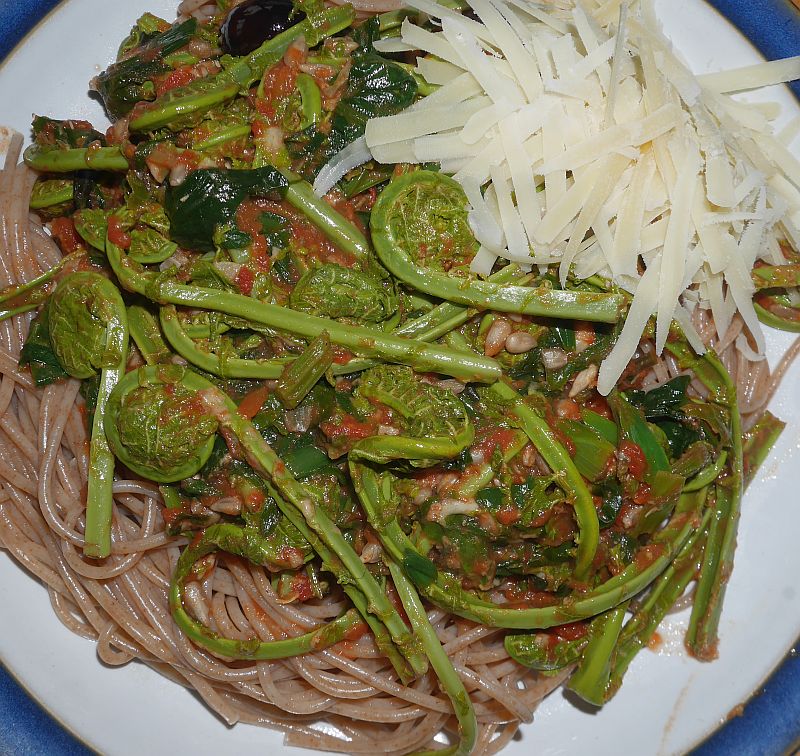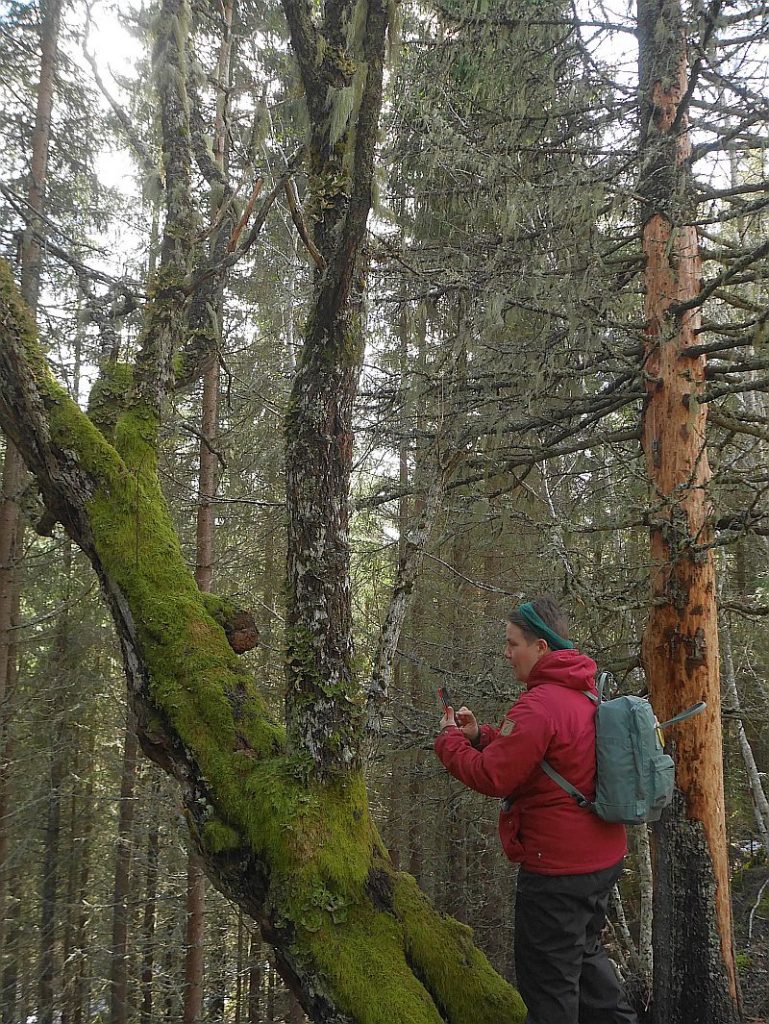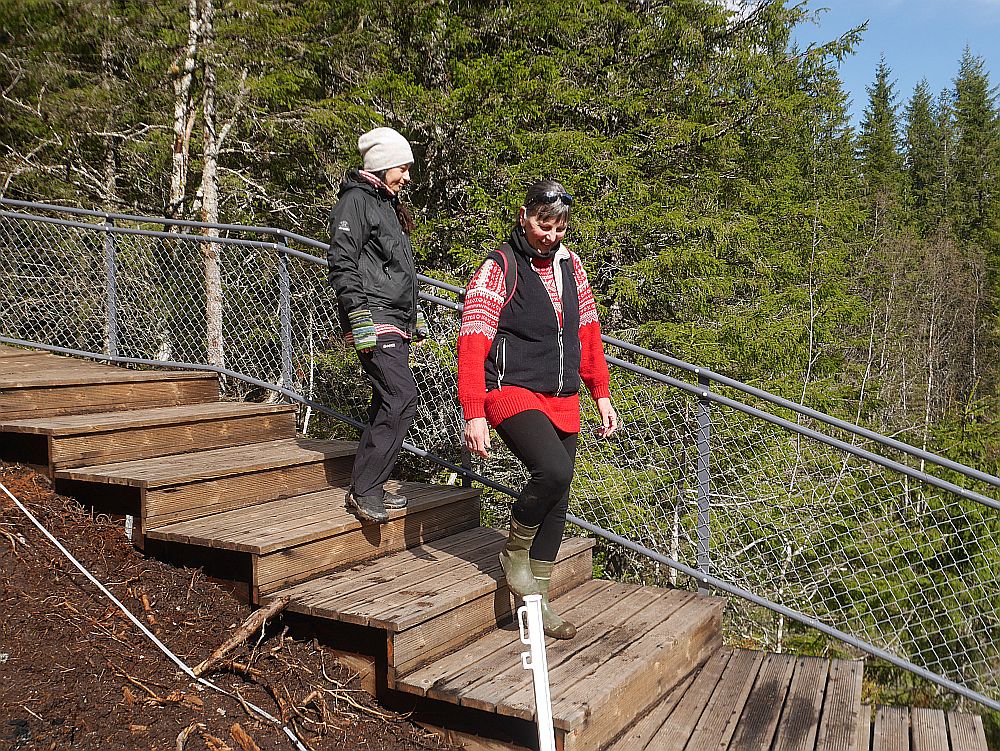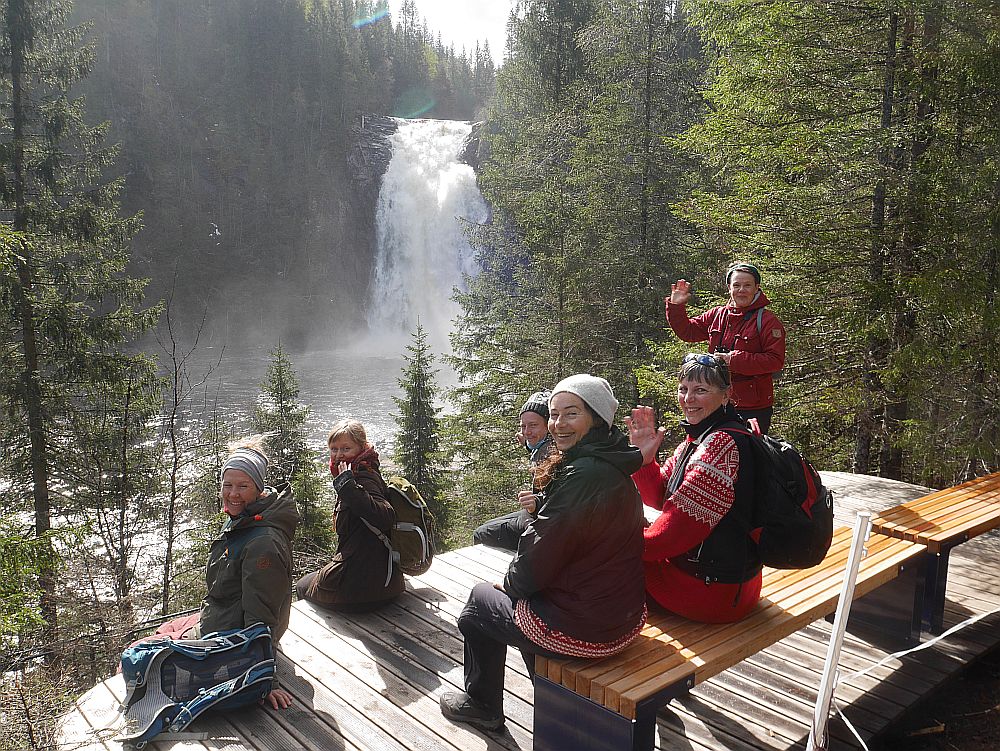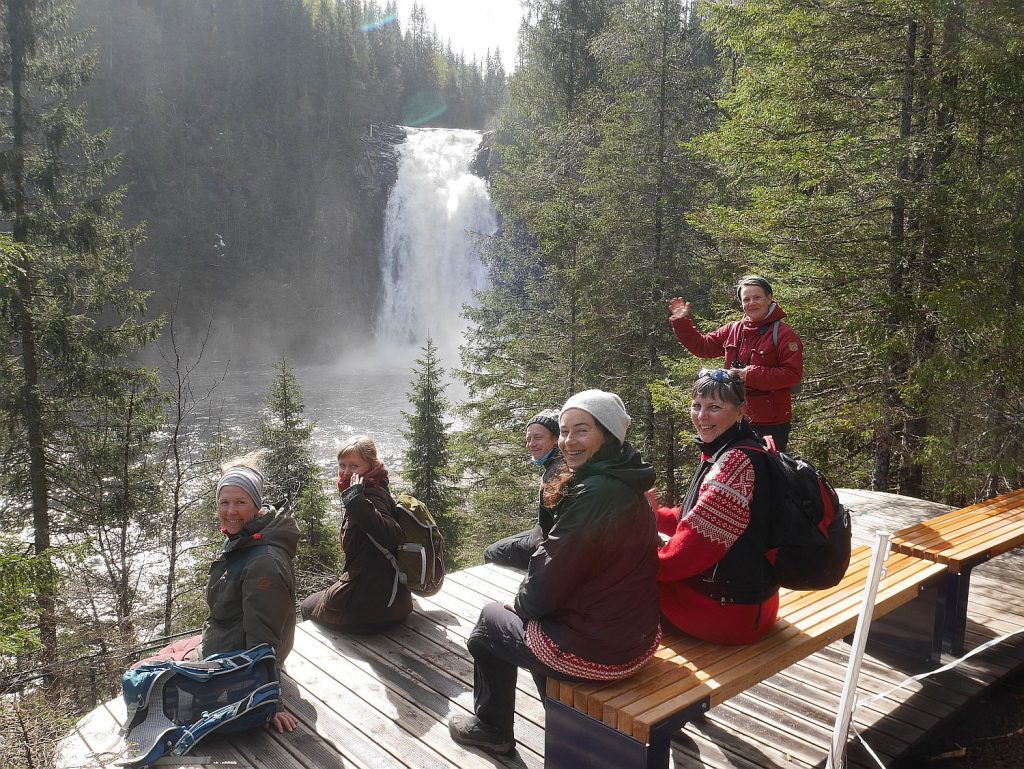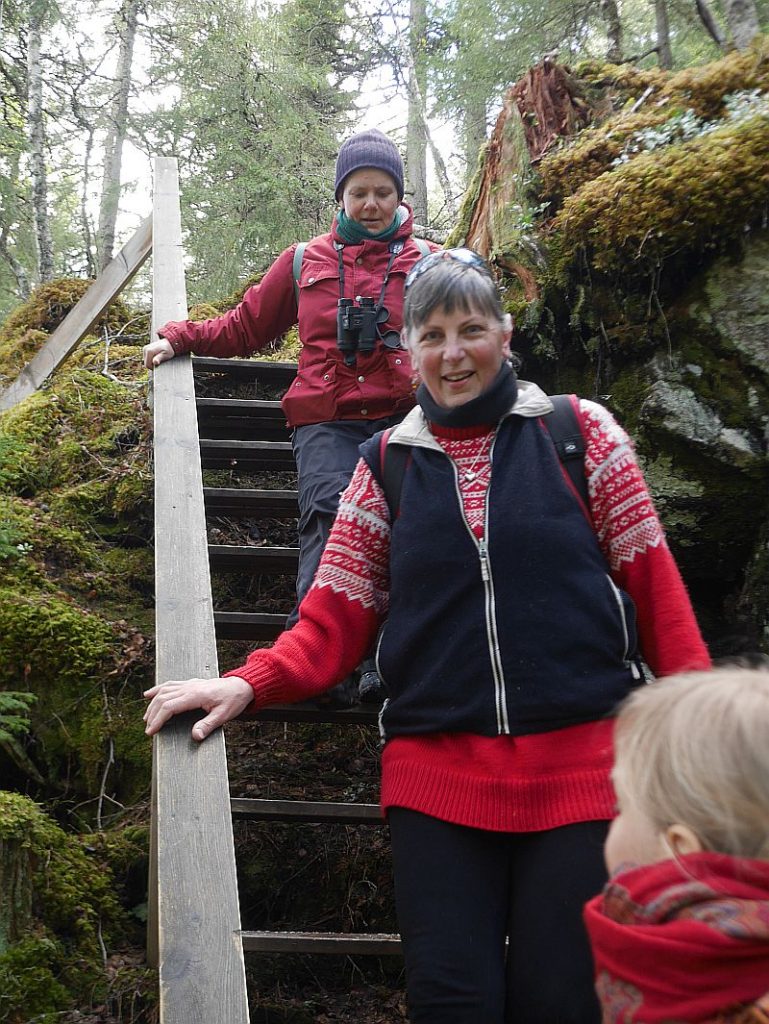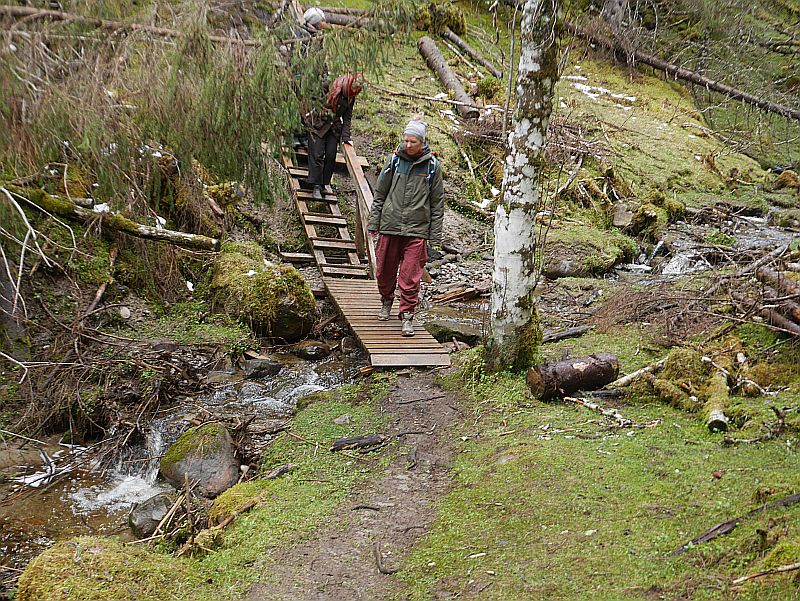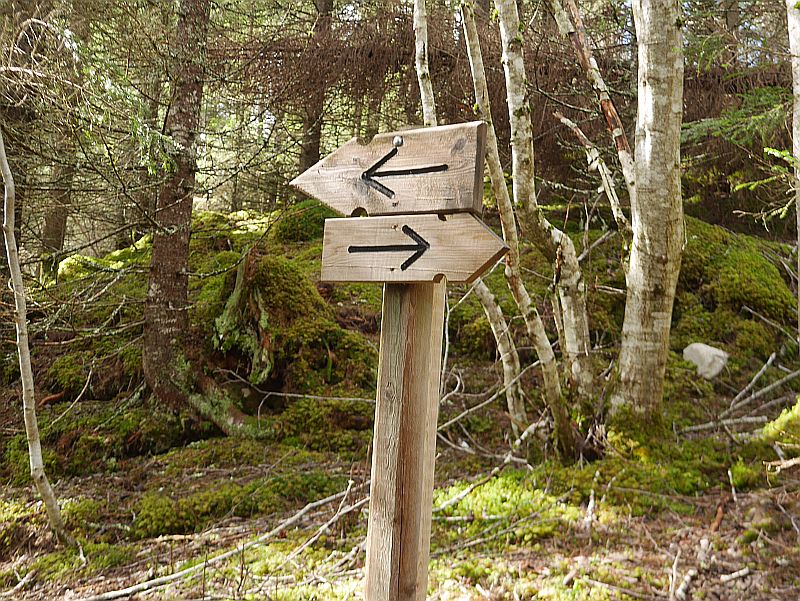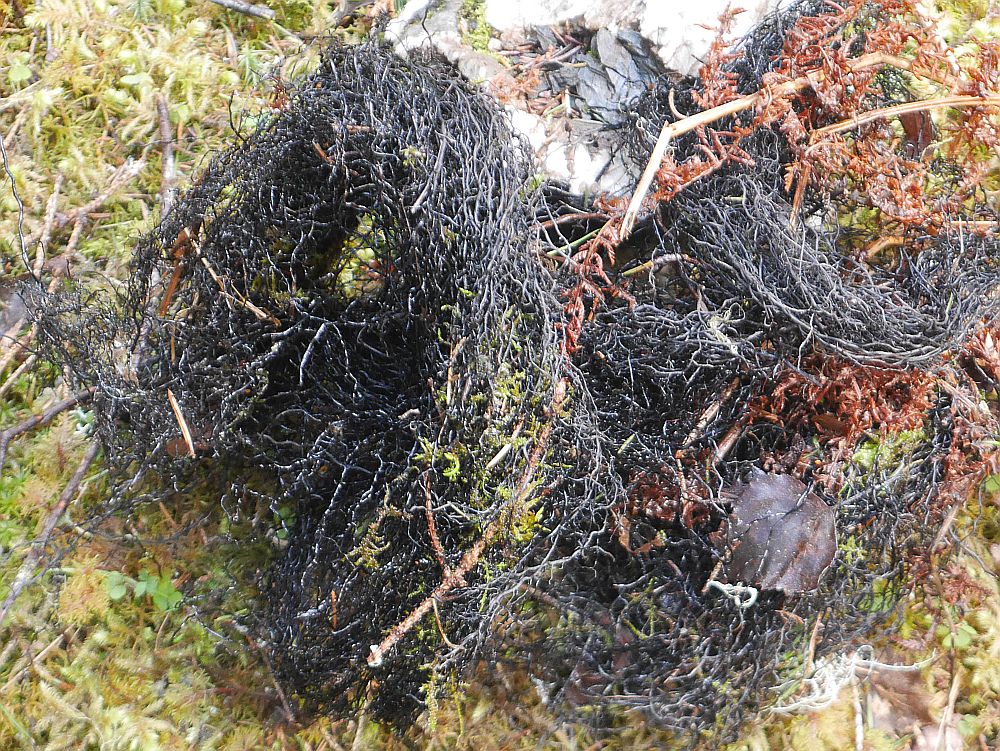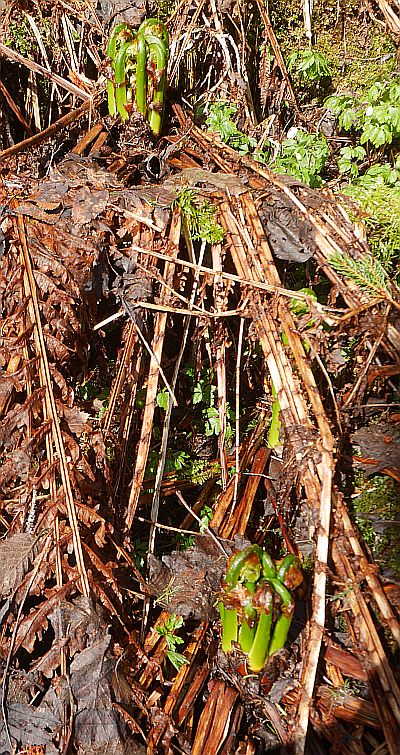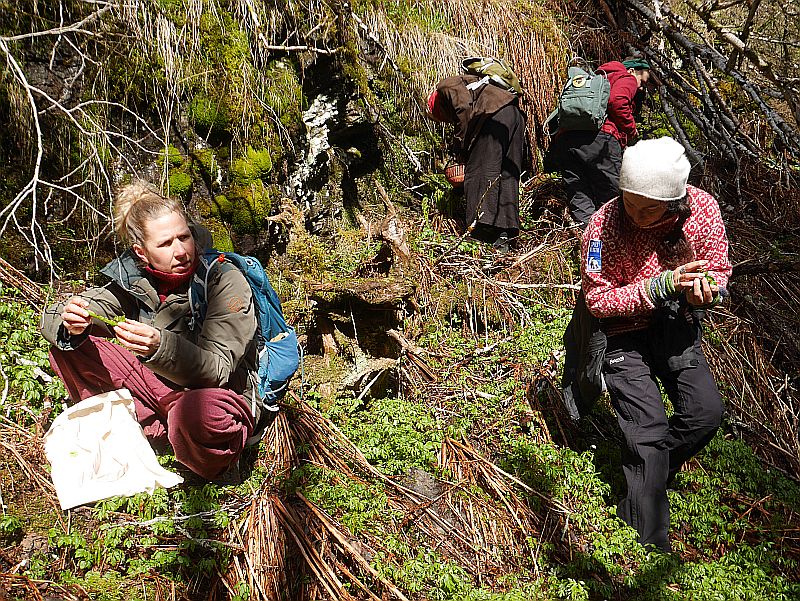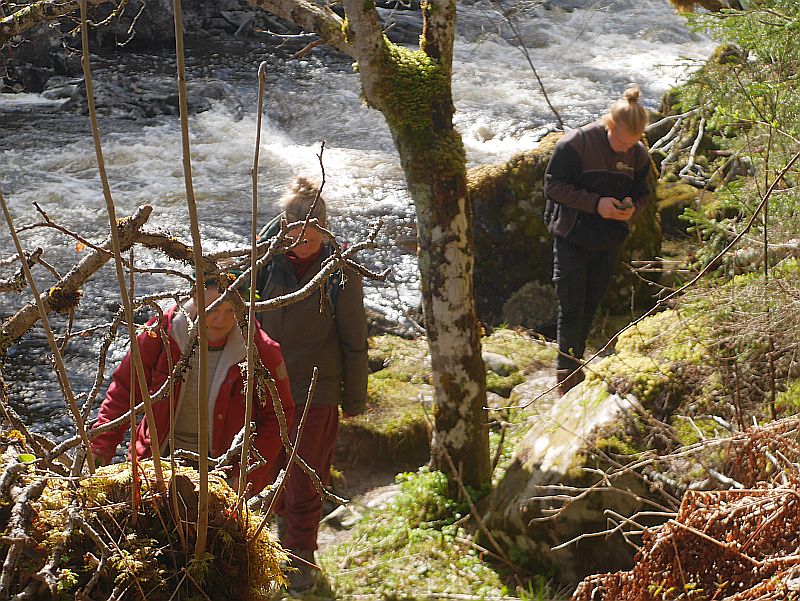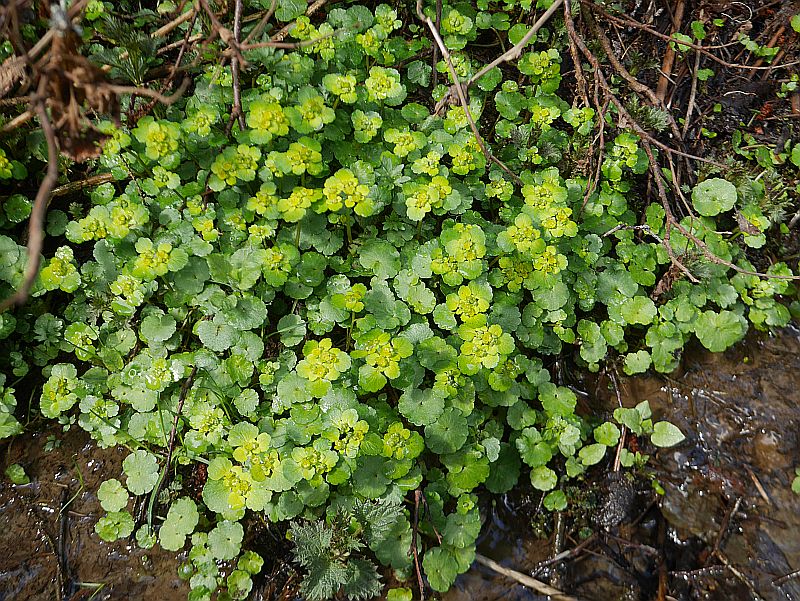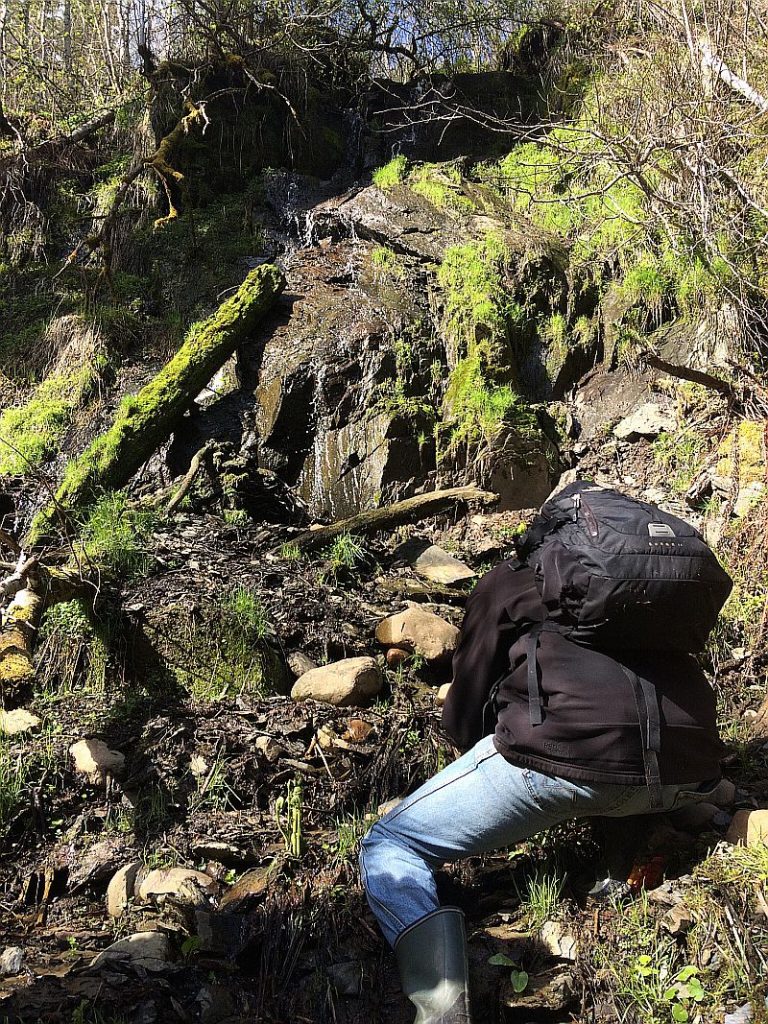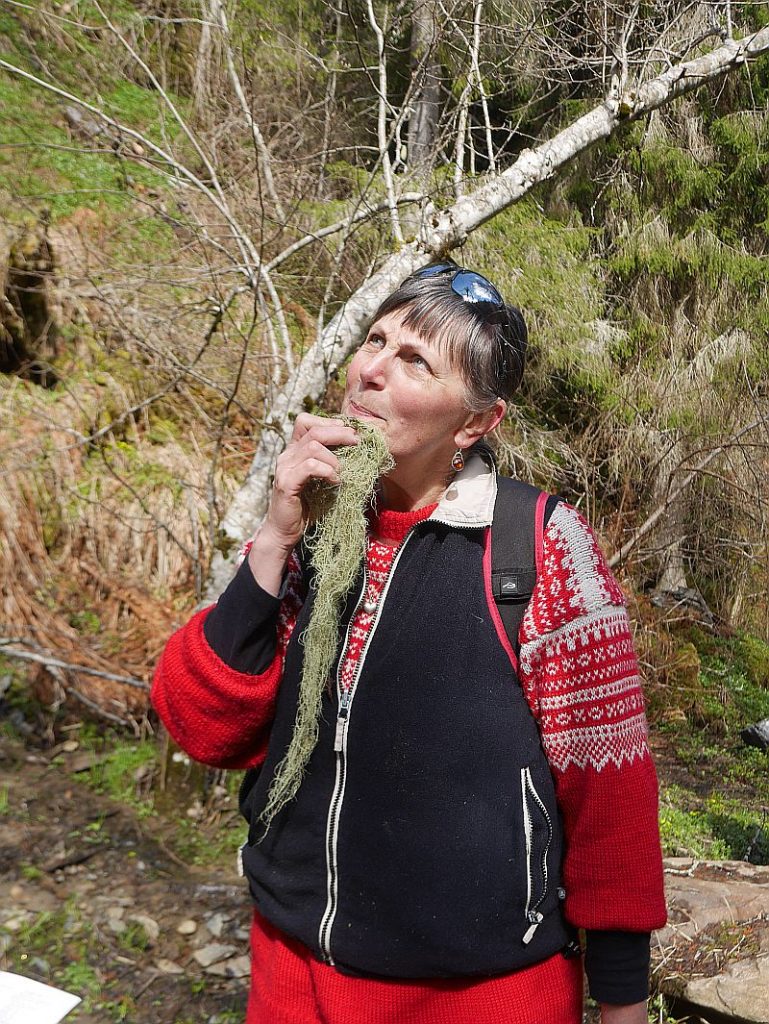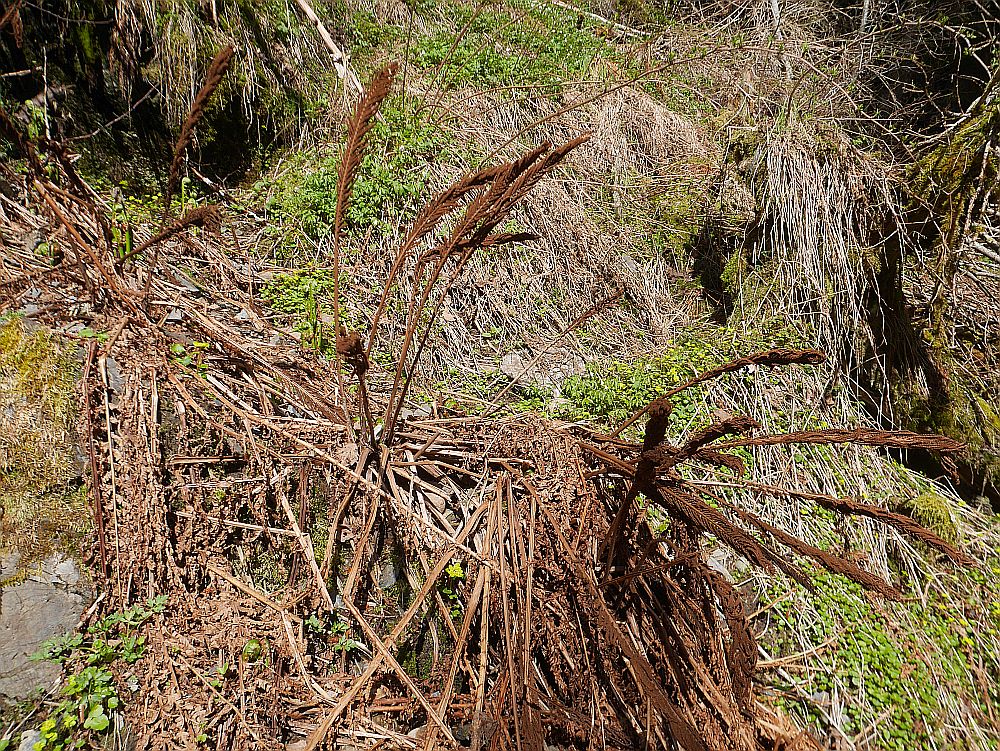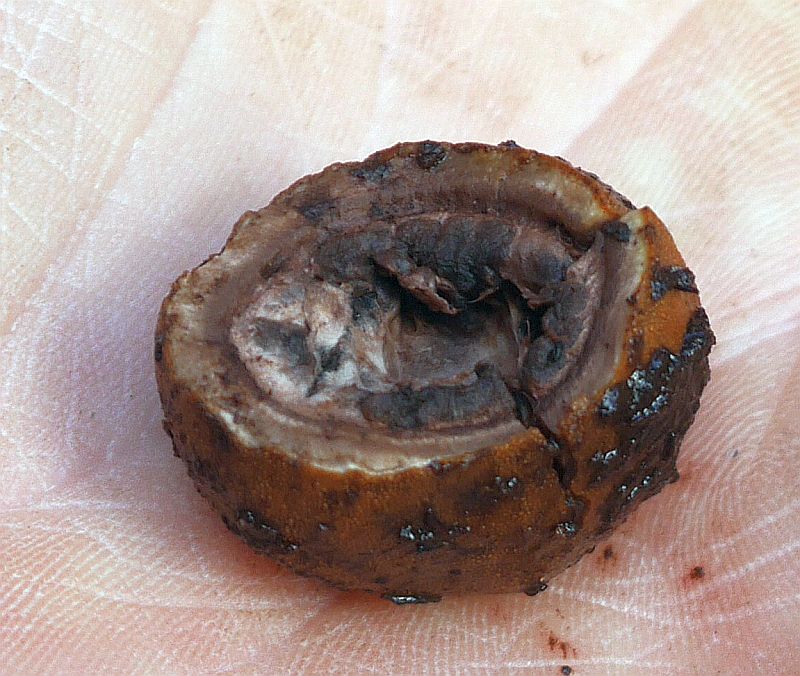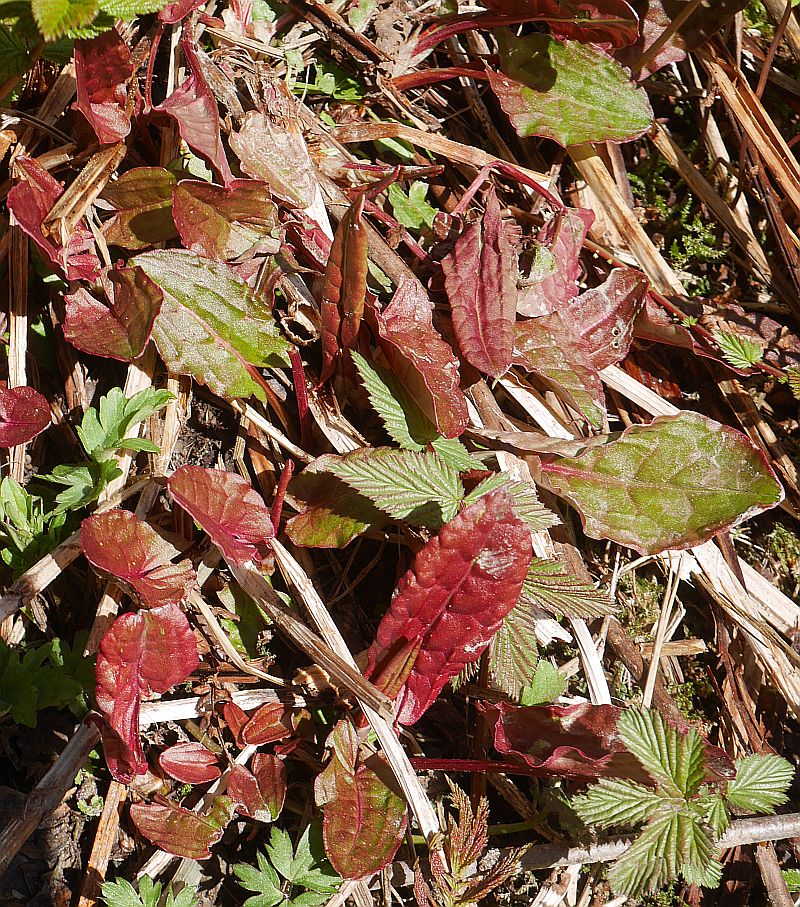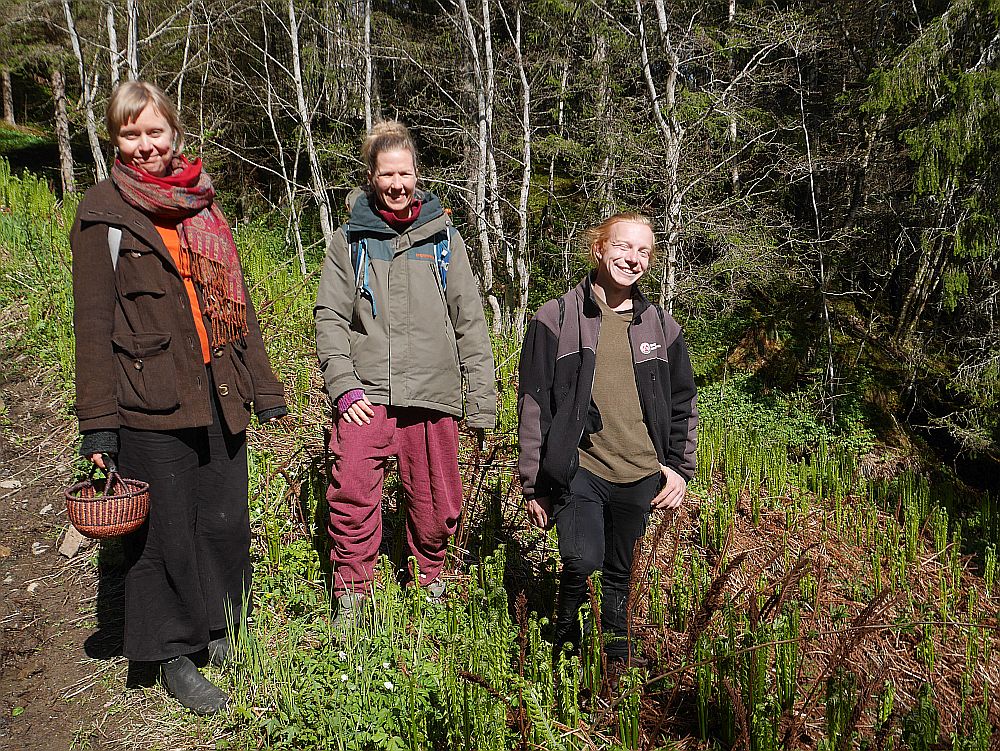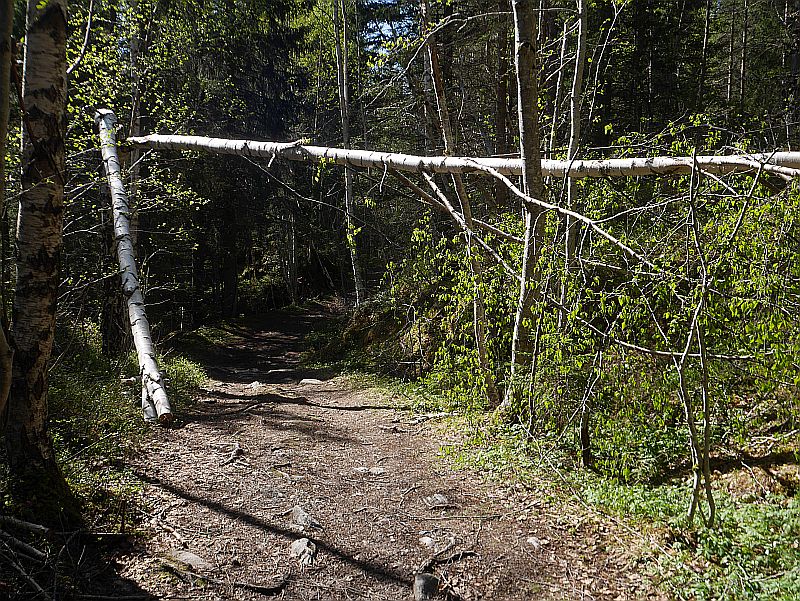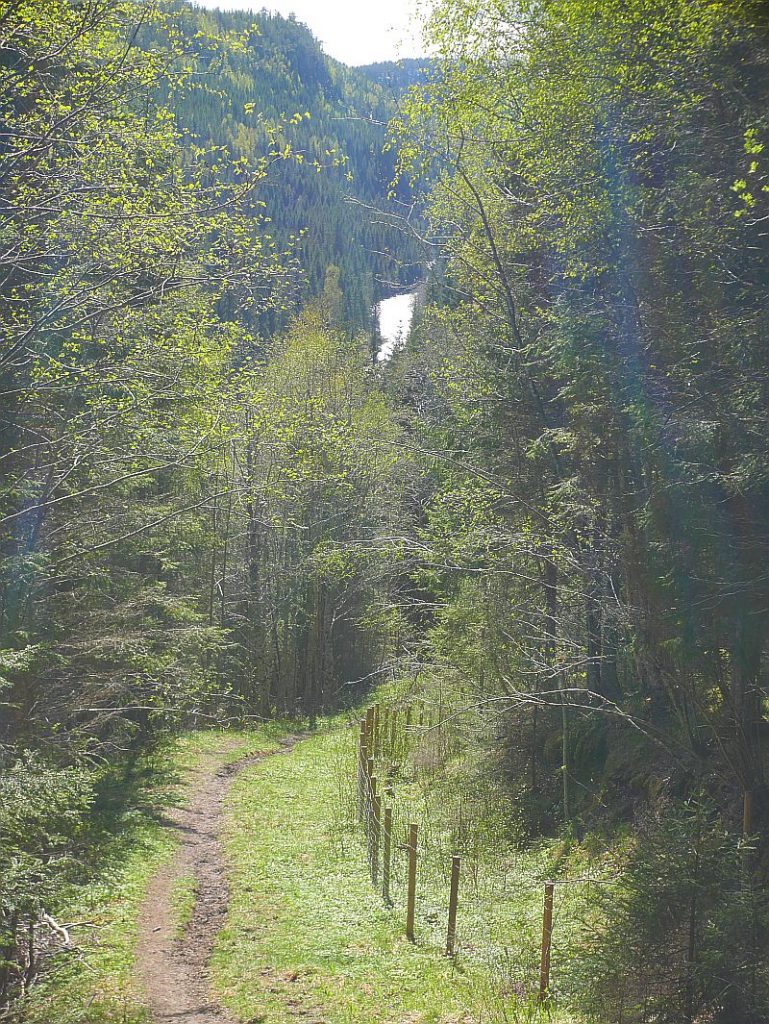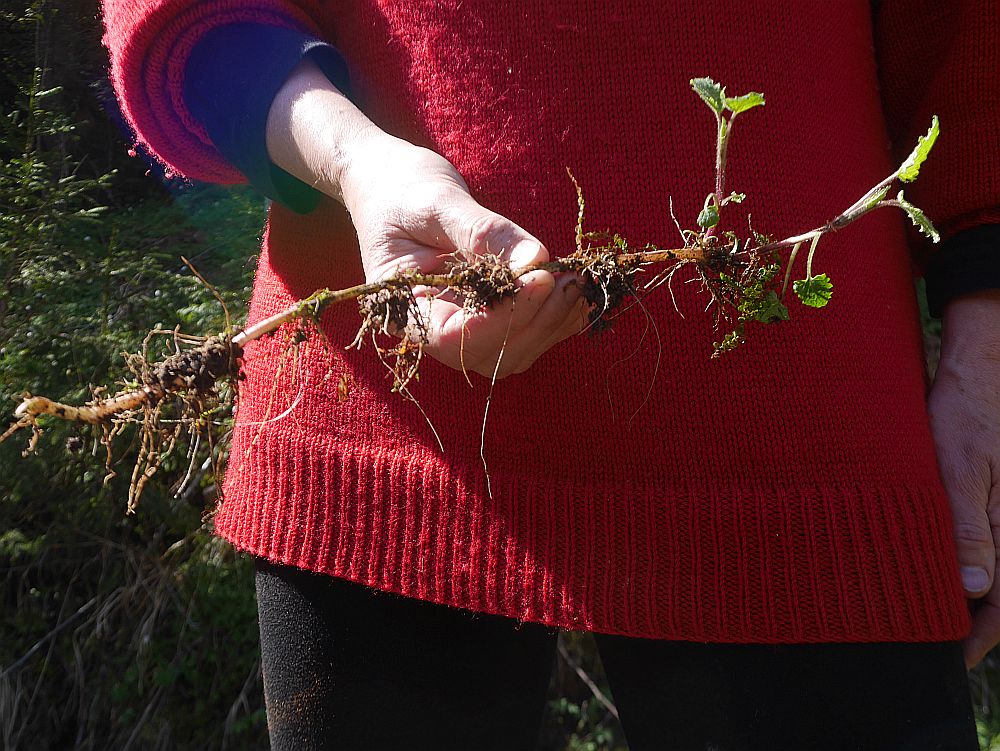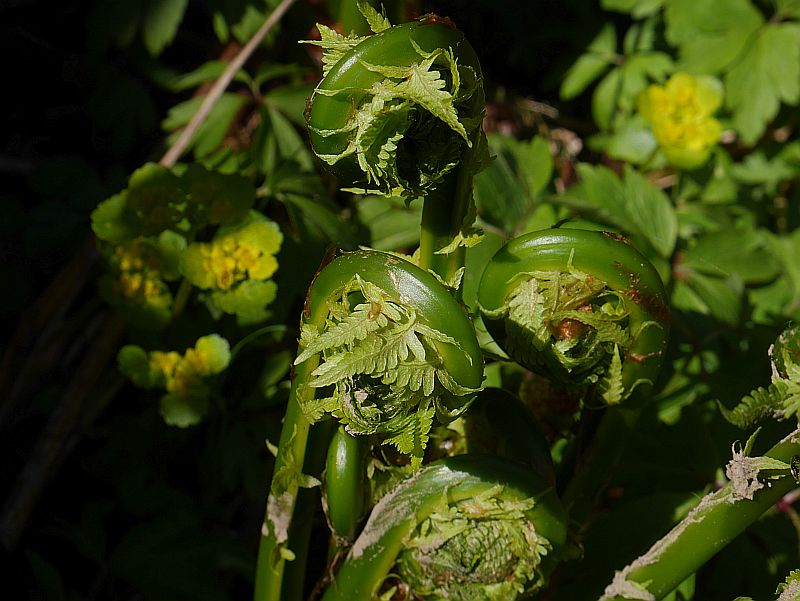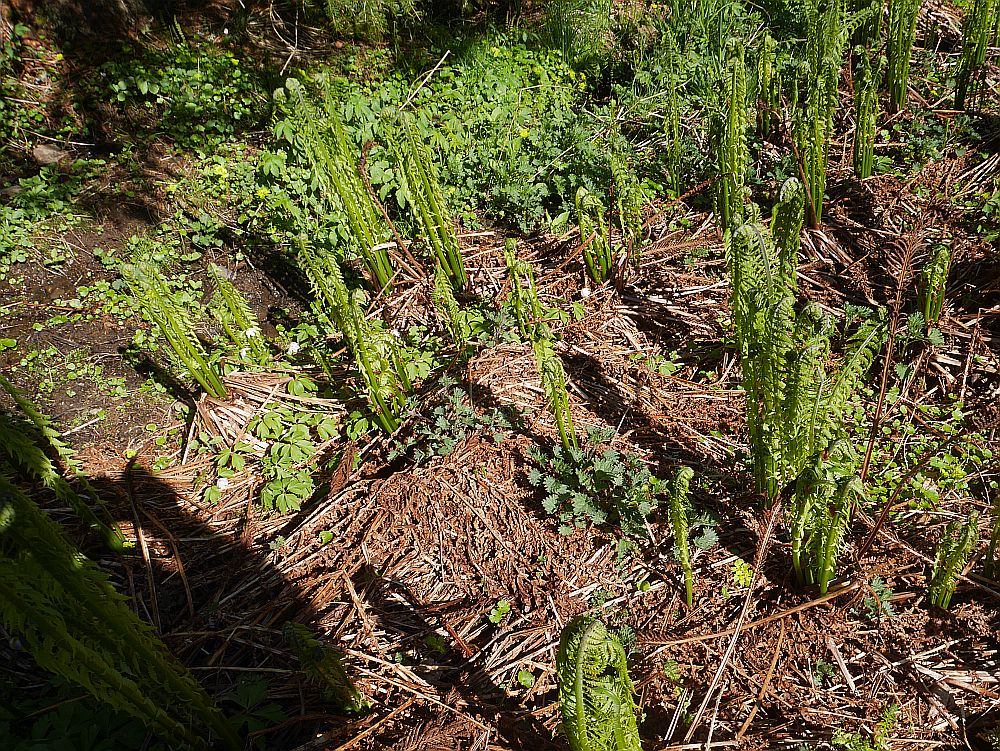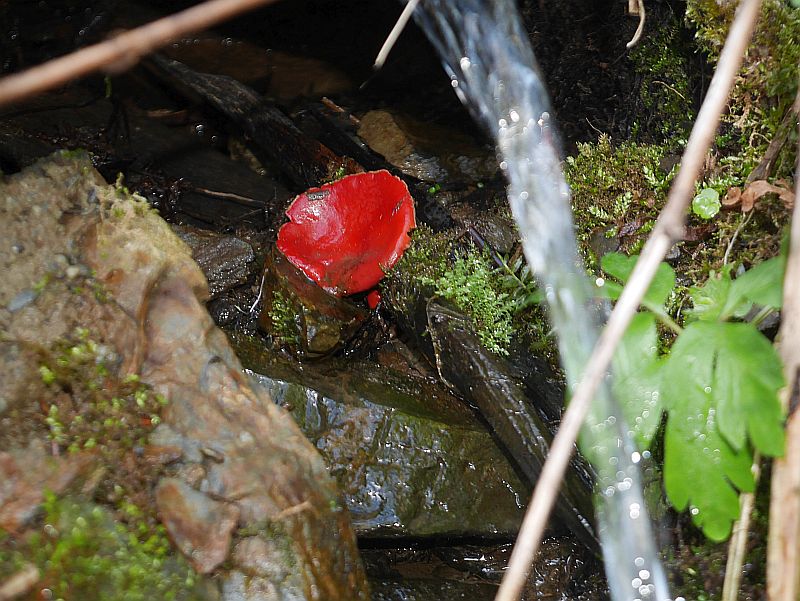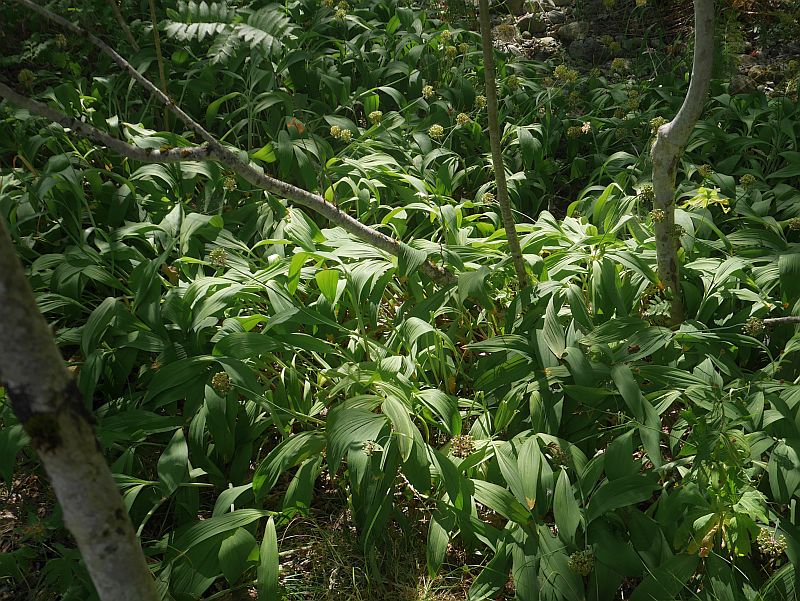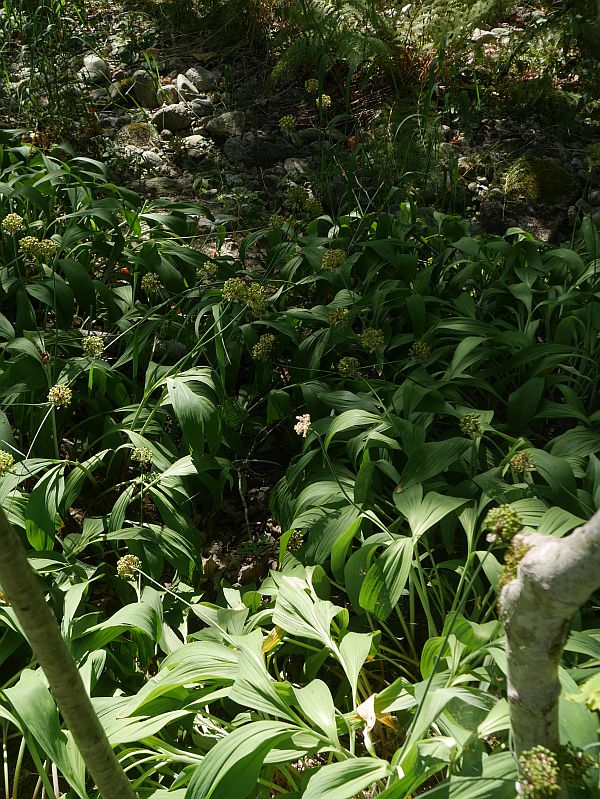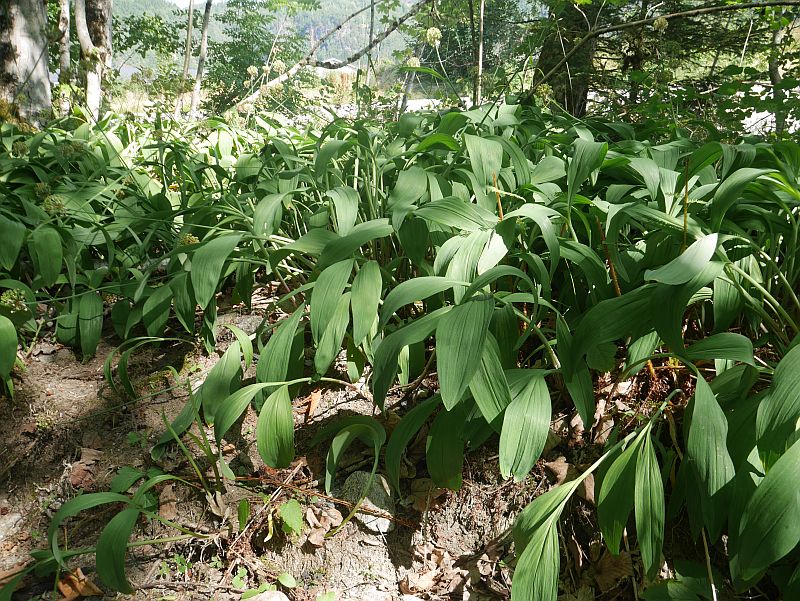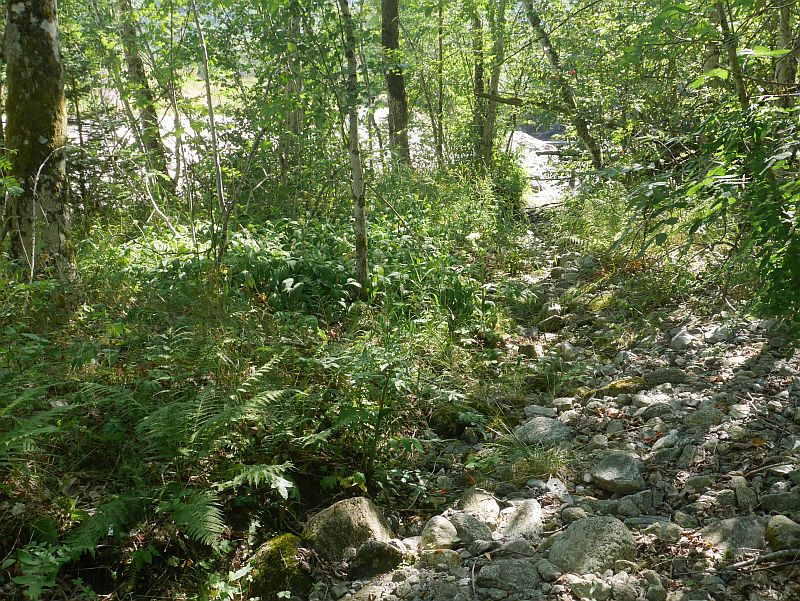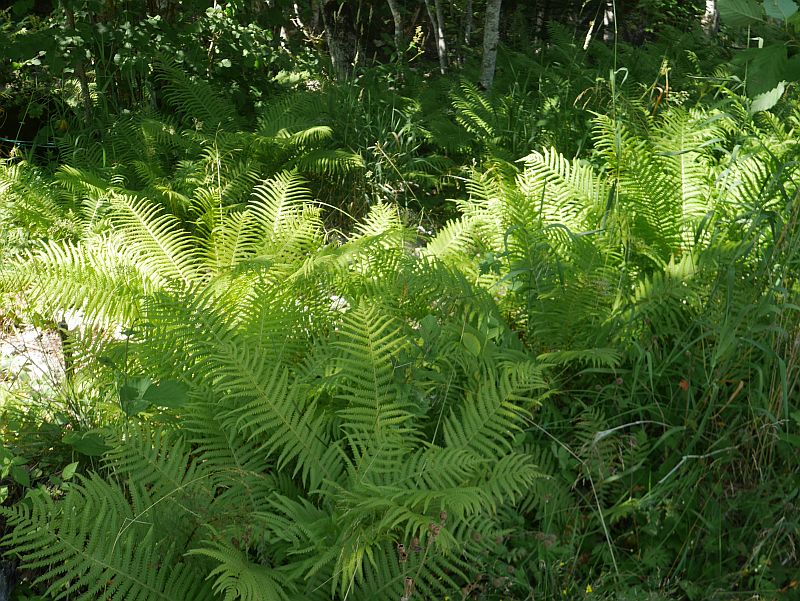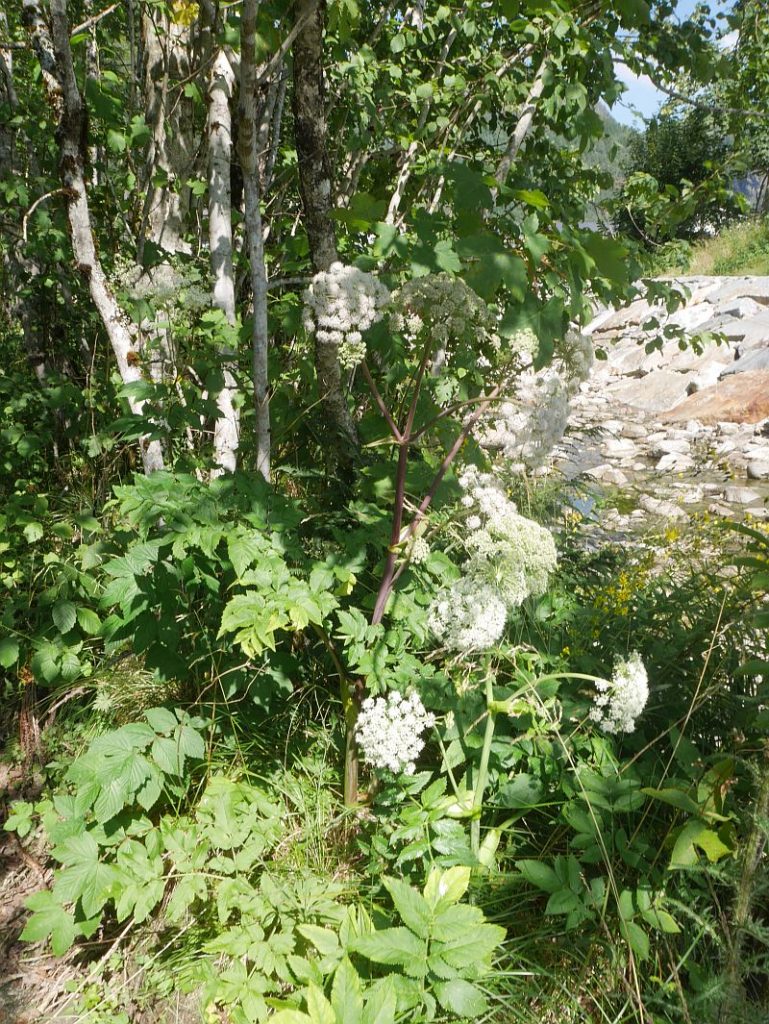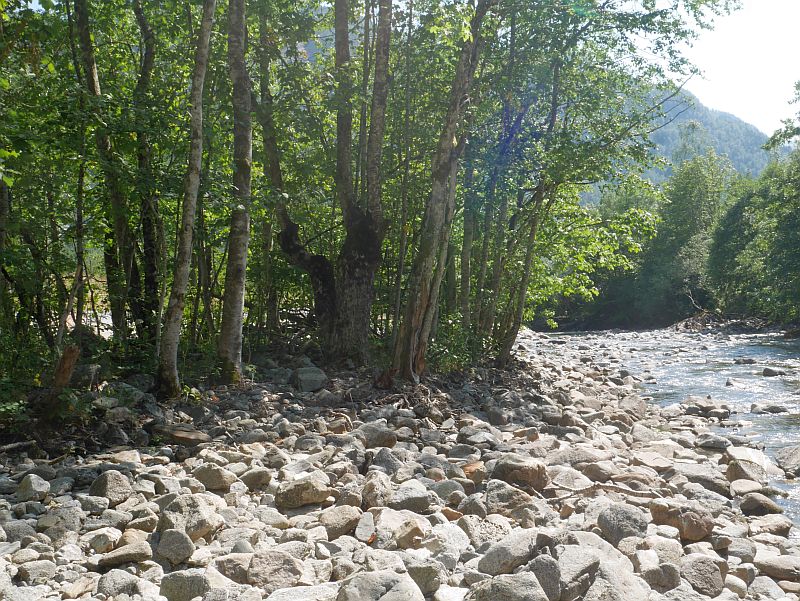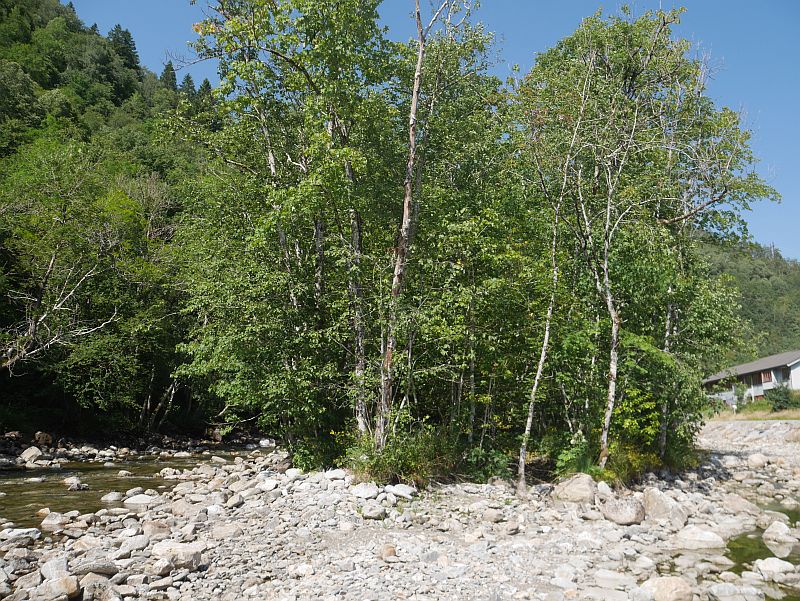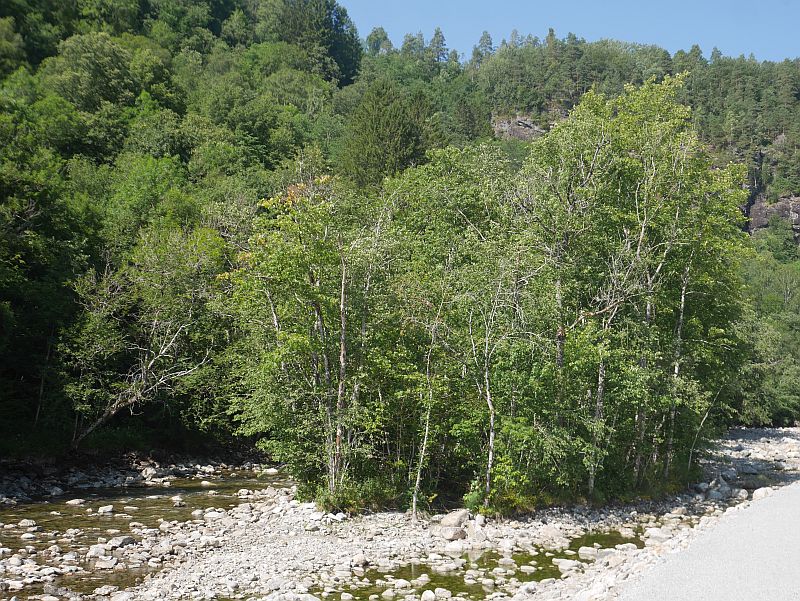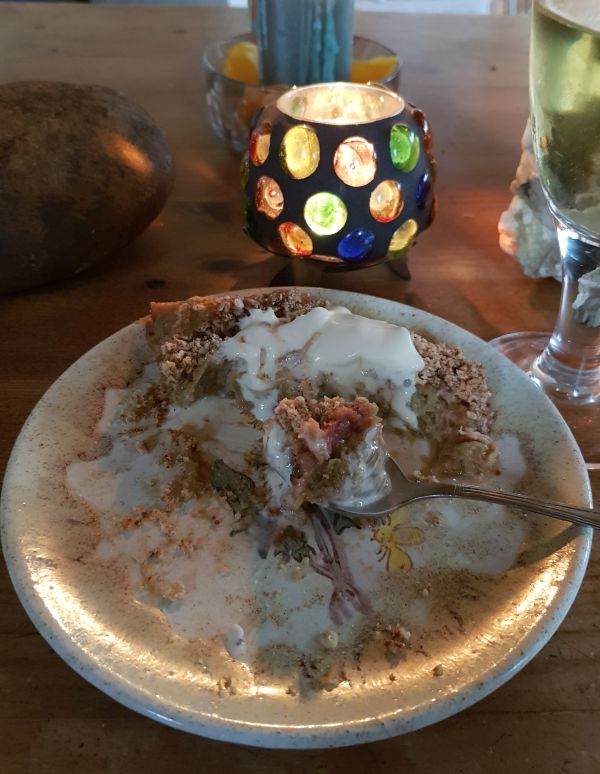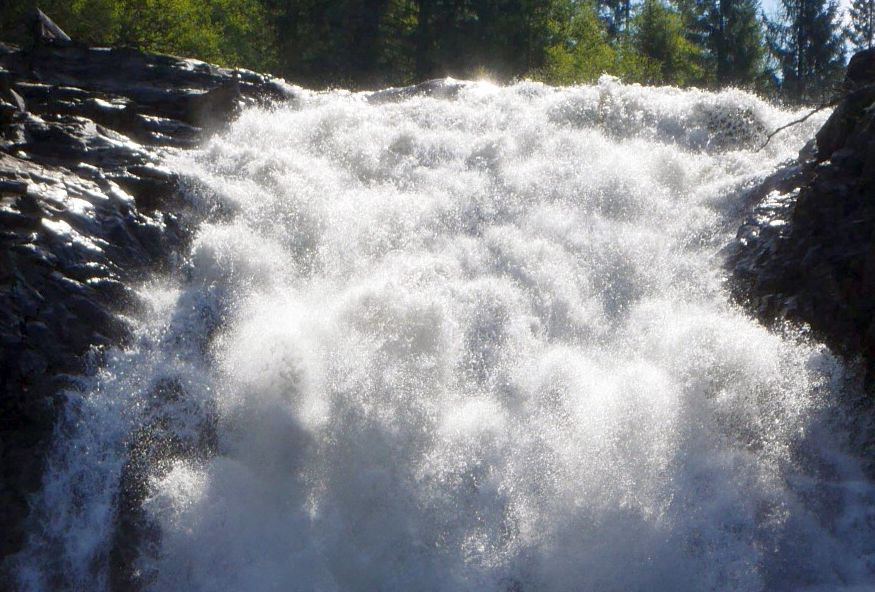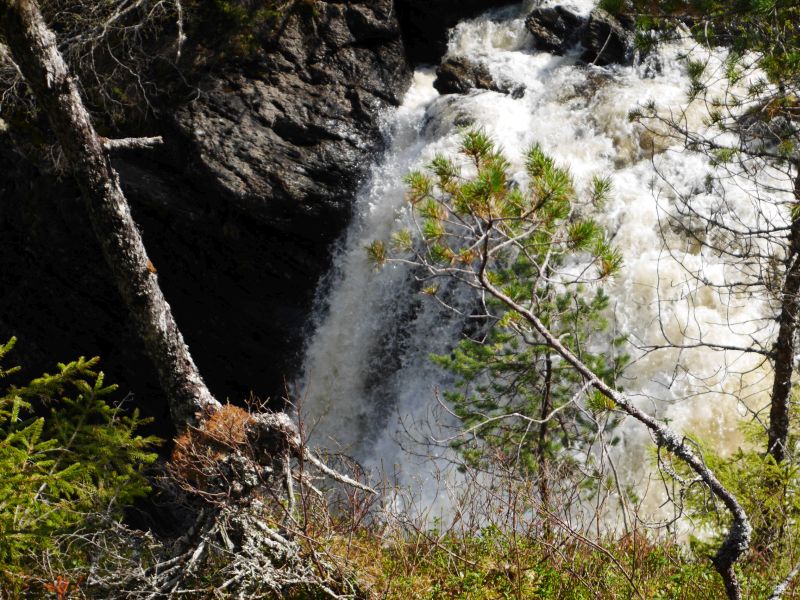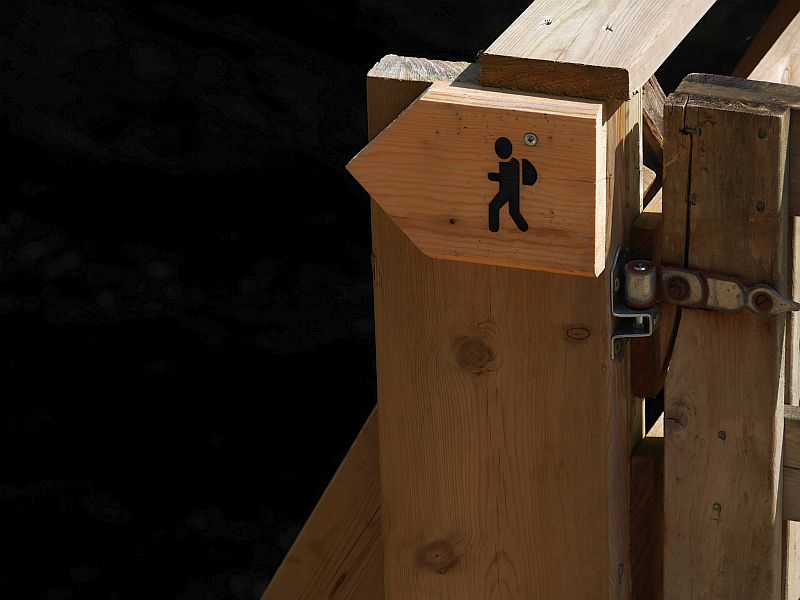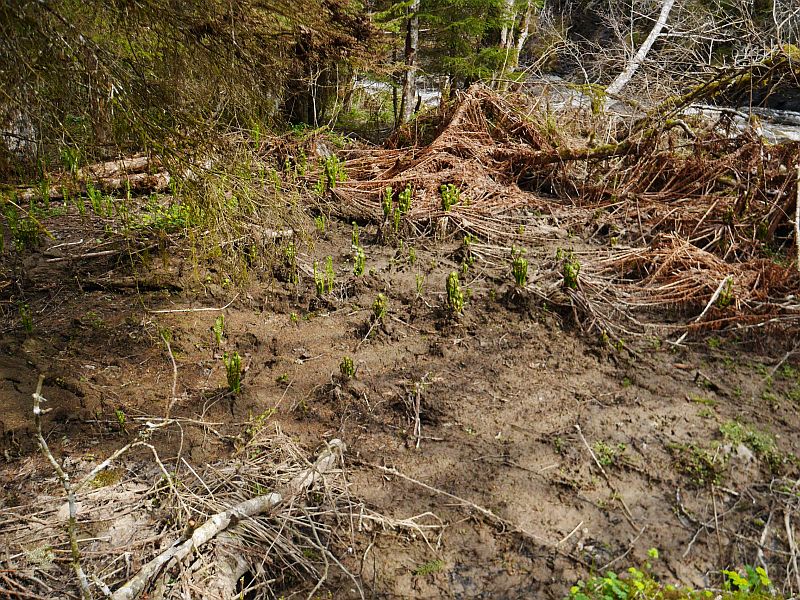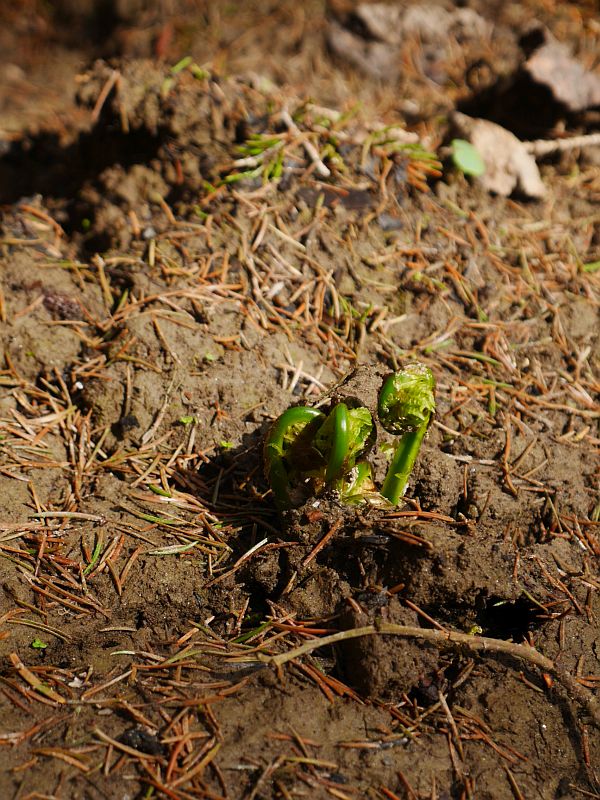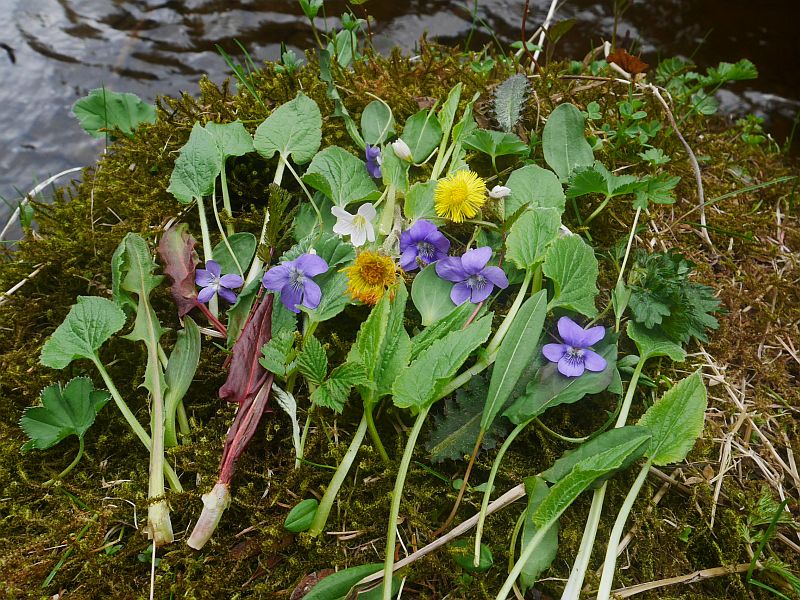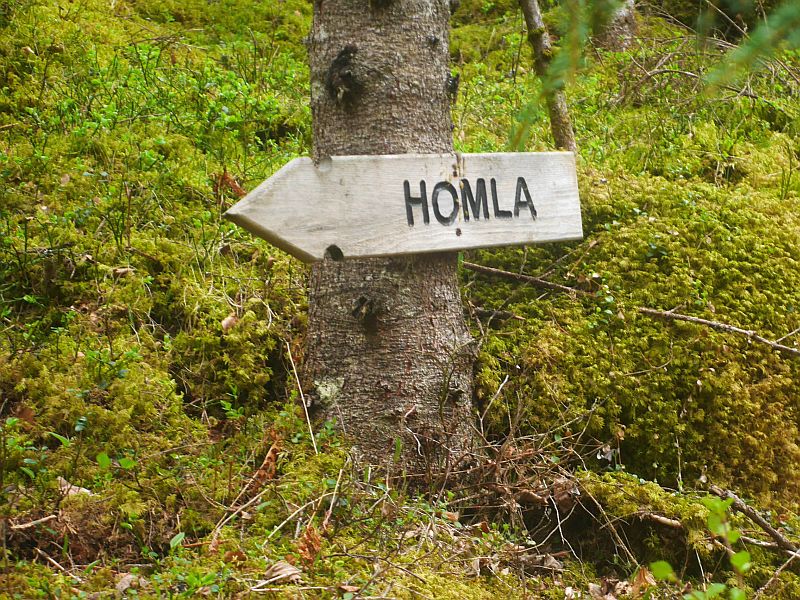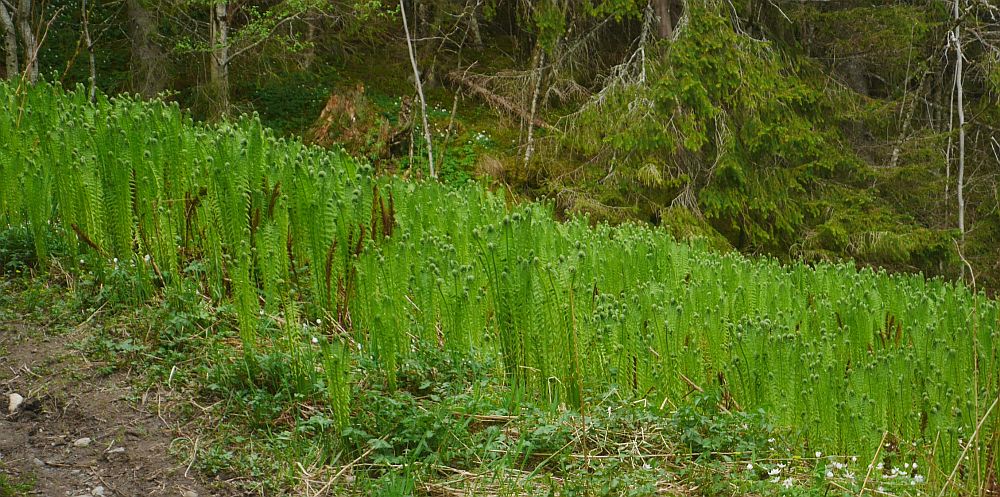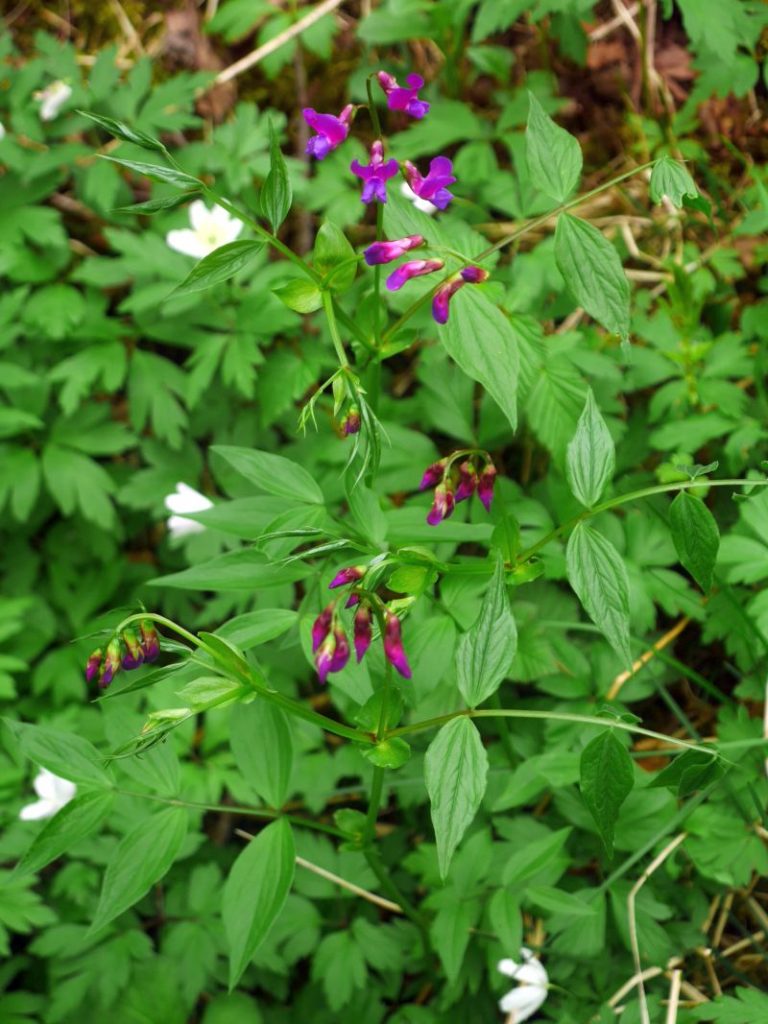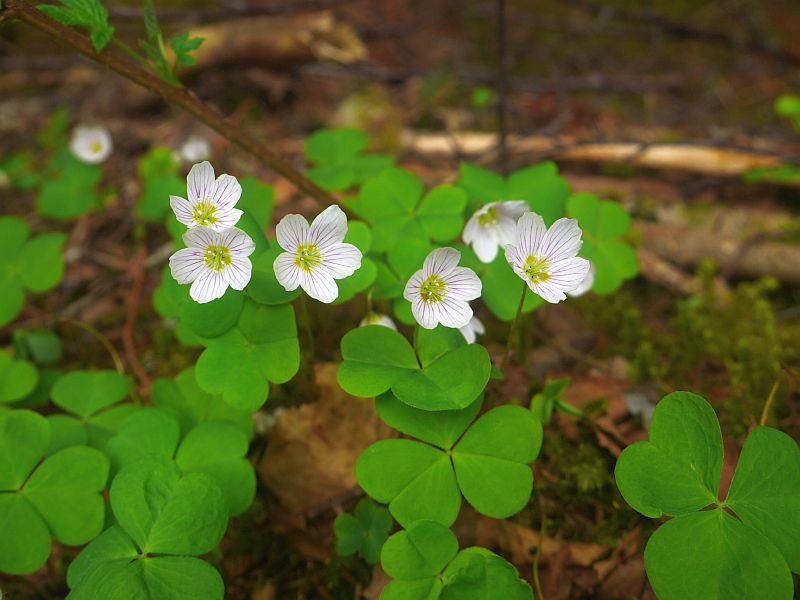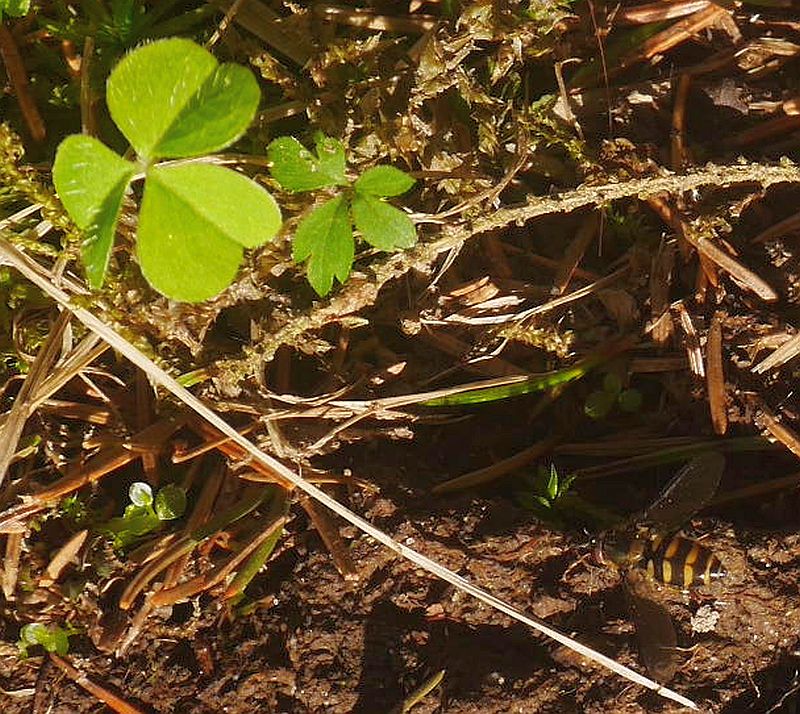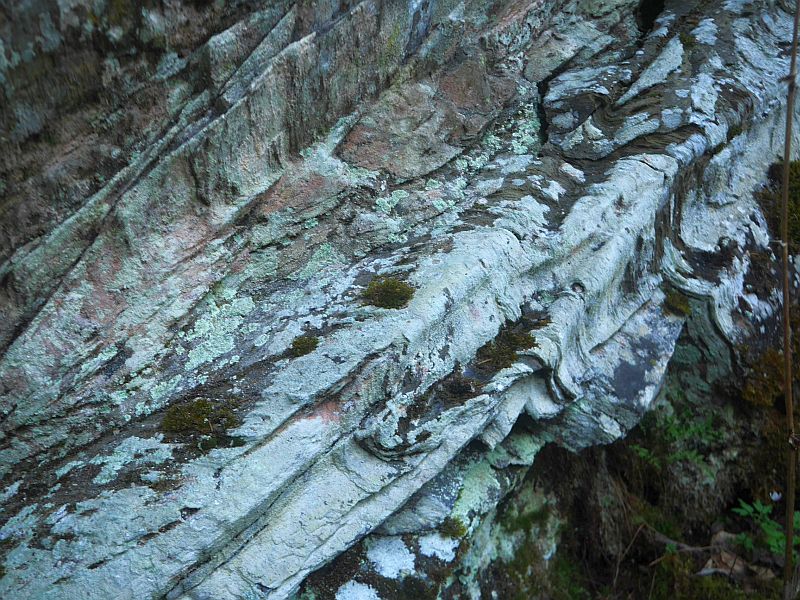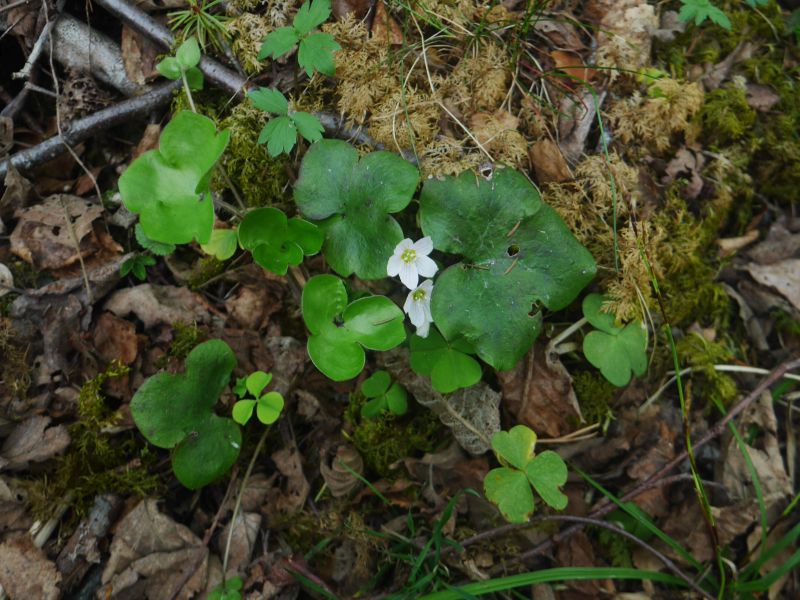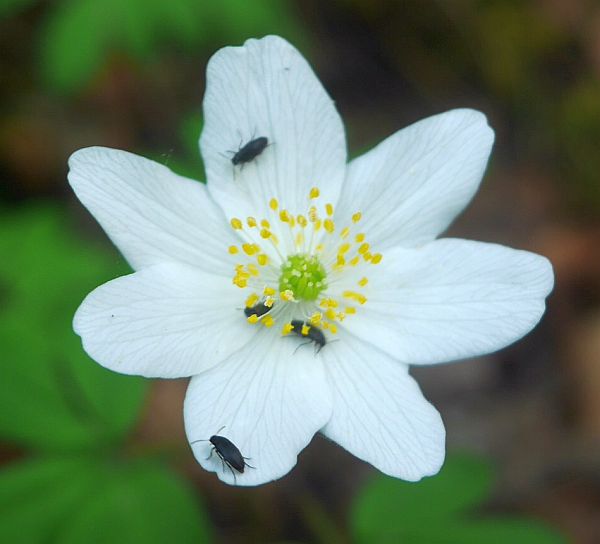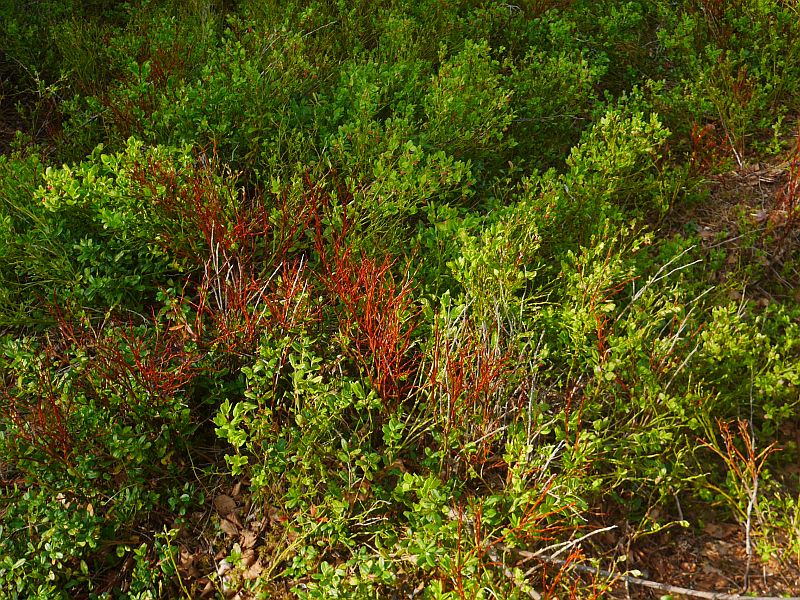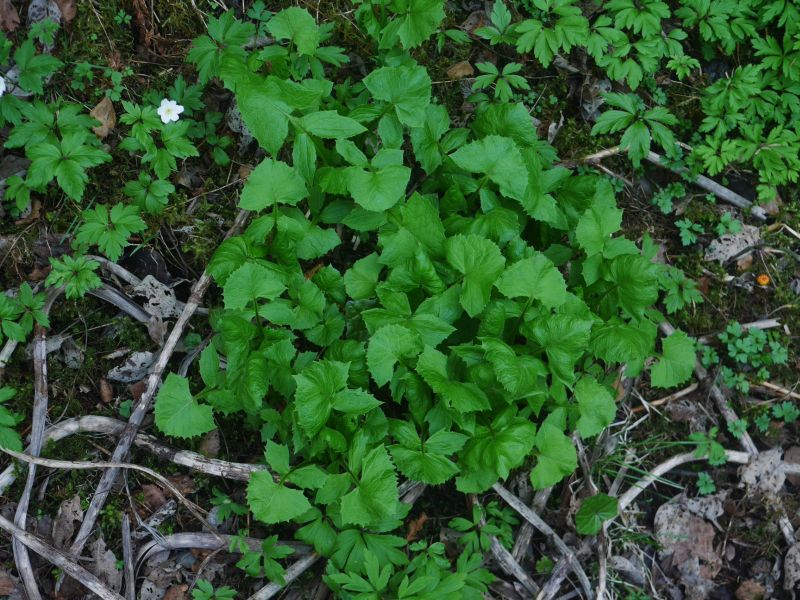Despite the record warm May here at 63.4N with temperatures up to 30C and drought like conditions (forest fire warnings on the news every day), my now 23 year old udo (Aralia cordata) has grown away well, but perhaps not as vigorous as normal in cooler damper conditions which are the norm for May. Sadly, my California-udo (Aralia californica) which was in a much drier location seems to have died, although I have a clone in the World Garden at the Væres Venner Community Garden.
Thanks to KVANN member Nina Sandli who took the picture on a visit on 25th May!
More about my super vegetable in many blog posts, see https://www.edimentals.com/blog/?s=udo
or read about it in my book Around the World in 80 plants!
Tag Archives: Strutseving
The 2021 Selfies with a 20-year old Udo
This year’s udo (Aralia cordata) selfie pictures, probably the highest ever with a flowering spike way above my head. I harvested about 1/3 of the shoots in the spring. This is my largest herbaceous perennial vegetable that was planted here 20 years old ago! It has never had any fertiliser and is growing on the steepest slope in my garden. Ostrich fern (strutseving) and giant bellflower (storklokke) can be seen in the foreground.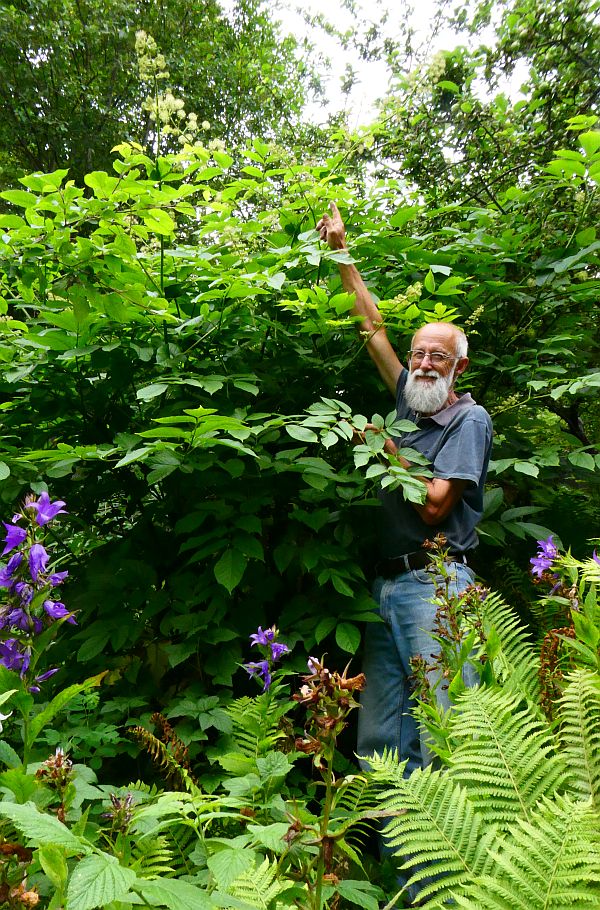
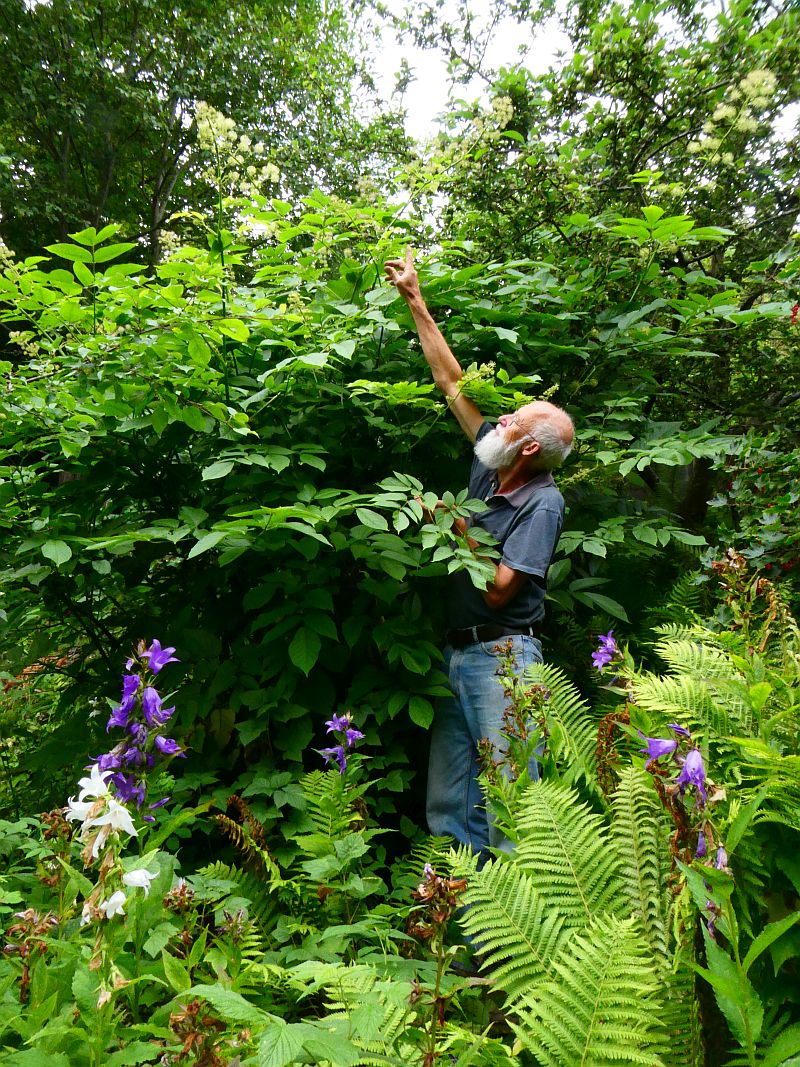
Japanese Sansai in March
Almost exactly 5 years ago this week I was on a study tour to Japan to look at Sansai production. I’m doing a webinar talk about the trip for Norwegian Seed Savers (KVANN) on 18th April. Although it’s open for all it will be in Norwegian. If there is interest for it I could repeat in English at some stage, but probably not before next winter. If anyone would like to organise it, please let me know. Otherwise, I may just organise it as the first Edimentals talk! See https://www.facebook.com/events/1333421547030675
Sansai (meaning mountain vegetables, mostly perennials) are what are essentially previously wild foraged vegetables which are now produced on farms in the lowlands around the cities in Japan, often in greenhouses for all year production – roots are often frozen until they are needed).
With a little planning one can extend the season for some of the best sansai vegetables by digging up roots in the autumn and planting them in soil in buckets which are stored in my cold cellar (just above 0C this winter), and ready to be brought up into the living room for forcing in winter / spring (they could also be left outside, protected by piling leaves or similar around them – the roots are more exposed to cold in a bucket). For blanching I use a second upturned bucket on top. I’ve now harvested three important sansai veggies which were forced (it took a couple of weeks);
Udo (Aralia cordata): peeled and sliced and eaten as a salad in a sesame oil and soy sauce with roasted sesame seed dressing
Ostrich Fern (Matteuccia struthiopteris): steamed for 10 minutes
Urui (Hosta sieboldiana): The blanched shoots are deliciously crispy and mild tasting, perfect with a dipping sauce (sesame oil, roasted sesame seeds and soy sauce)
The sansai were served with fried veggie beetroot burgers (aka blood burgers) which are cooked and grated beetroot mixed with egg and wholegrain emmer flour (with grated onion, garlic, chili, salt and pepper).
Green Ostrich Pasta
I noticed yesterday that the ostrich ferns (strutseving) in the forest garden had put on a spurt despite the cold weather and were almost past the harvesting stage. This is the main disadvantage of this great vegetable. The harvesting window is very narrow. I quickly harvested some, taking care not to take more than 1/3 of the shoots. Together with Hablitzia tamnoides (Caucasian spinach), a bit of sea kale (strandkål), ramsons (ramsløk) and sand leeks (bendelløk) this made a delicious green pasta sauce.
See the video before I picked below!
Dried ostrich ferns
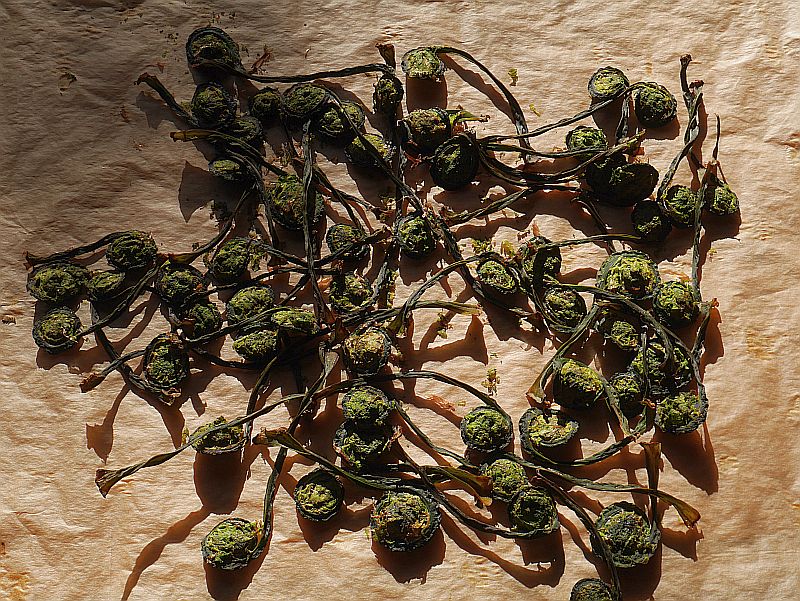
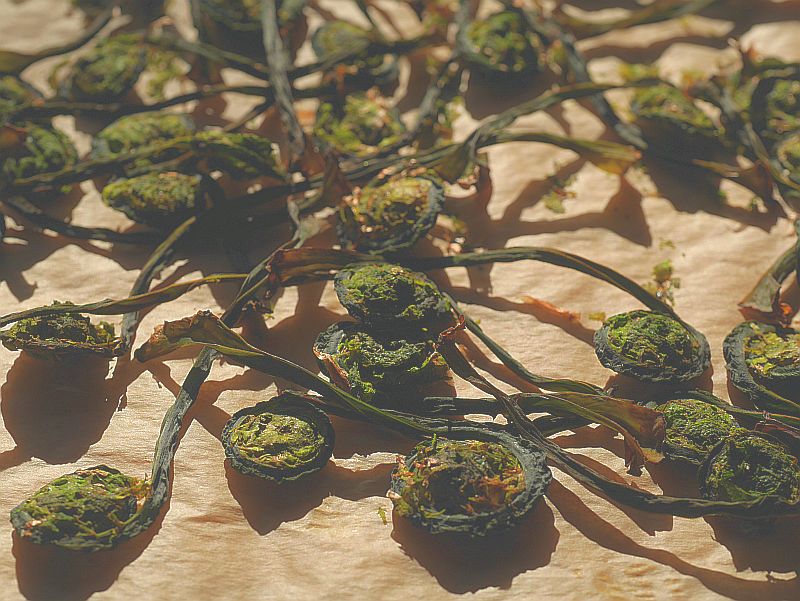
KVANN’s Annual Meeting Weekend: Day 4; Ostrich Fern hike along the Homla
It was as usual a magical walk which took some of us 8 hours to complete….as there was so much to see and enjoy!
Thanks to all the participants who also provided pictures: Berit Børte (third time participant), new steering commitee member Bernhard Askedalen, Elin Mar (from Røst), Inger Line Skurdal Ødegård, Meg Anderson and Tina Lambert!
Ostrich Fern Paradise:
Status of the Granvin victory onion location
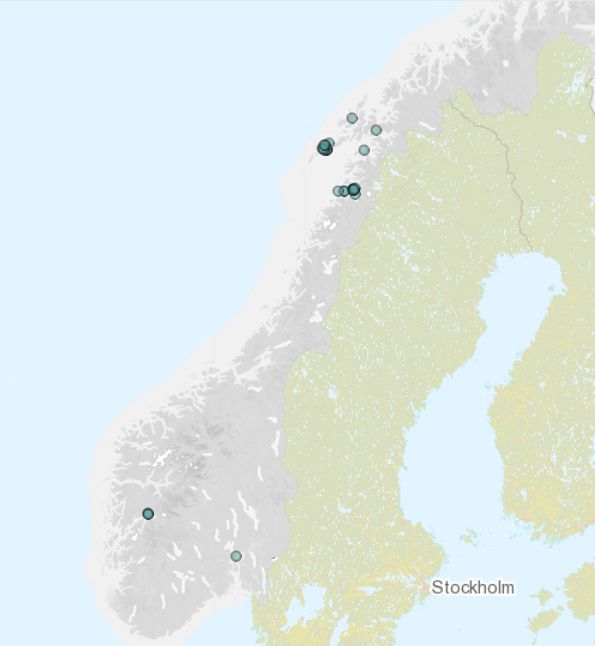
In late October 2014, there was a major flood in western Norway (https://nn.wikipedia.org/wiki/Oktoberflaumen_i_2014) which caused a lot of damage including in Granvin. Over 200mm rain was recorded over 3 days in several places and up to 330mm! Although not a record, it had already rained a lot for most of October and the ground was already saturated when the worst rain happened…leading to a totally unexpected extreme event.
I heard rumours that the victory onion location had been severely impacted by this event, so when we drove past Granvin on the way back from the Nordic Permaculture Festival in Jondal, I took the opportunity to visit the location! This confirmed that the site is much reduced and there is visible signs of erosion including a dried up channel through the middle of the wooded island where the onion is found (the river was very low due to the drought). In addition, I was surprised to find that a path had been constructed between the river and the school. This is part of a major civil engineering work in Granvin to protect the low lying inhabited areas from flooding (see https://www.nve.no/nytt-fra-nve/nyheter-skred-og-vassdrag/granvin-har-fatt-betre-tryggleik-mot-flaum )
A video showing the completed works https://www.youtube.com/watch?v=Keg-BSrAi94 shows aerial views of “victory onion island” between 0:56 – 1:24!
These works may lead to further erosion and destruction of the island….
Seeds were actually already ripe due to the hot summer and I therefore collected seed to safeguard the Granvin onion to be offered to Norwegian Seed Savers (KVANN) through our autumn catalogue which will be produced in October!
From my friend Geir Flatabø: “Jaunssen Gjestgjevarstad (Jaunssen Guest House) in Granvin has begun to harvest / use the onion, and makes pesto served to guests, with good feedback.”
Other relevant articles:
Hagetidend (Norwegian gardening magazine) profile http://www.edimentals.com/blog/wp-content/uploads/2018/07/6_Seiersl%C3%B8k_fra_Vestv%C3%A5g%C3%B8y.pdf
A report from my 2009 “onion safari” to Lofoten, Tromsø and Granvin can be found here (in Norwegian with English comments) http://www.edimentals.com/blog/?p=18527 (some of this material ended up in my book Around the World in 80 plants))
Belated happy birthday to me
Most years since I’ve followed this tradition on or near my birthday, no chips this year as the potatoes have run out and nowadays the macaroni cheese is mixed with masses of green stuff both from the garden and, yesterday, fiddleheads harvested on the Homla walk. This is more or less the only time in the year I have dessert and the only time I eat sugar…in rhubarb crumble, also with family roots back to the 60s :)
rhubarb crumble, also with family roots back to the 60s :)
Homla walk May 2018
2002 Norwegian Article on Ostrich Fern


